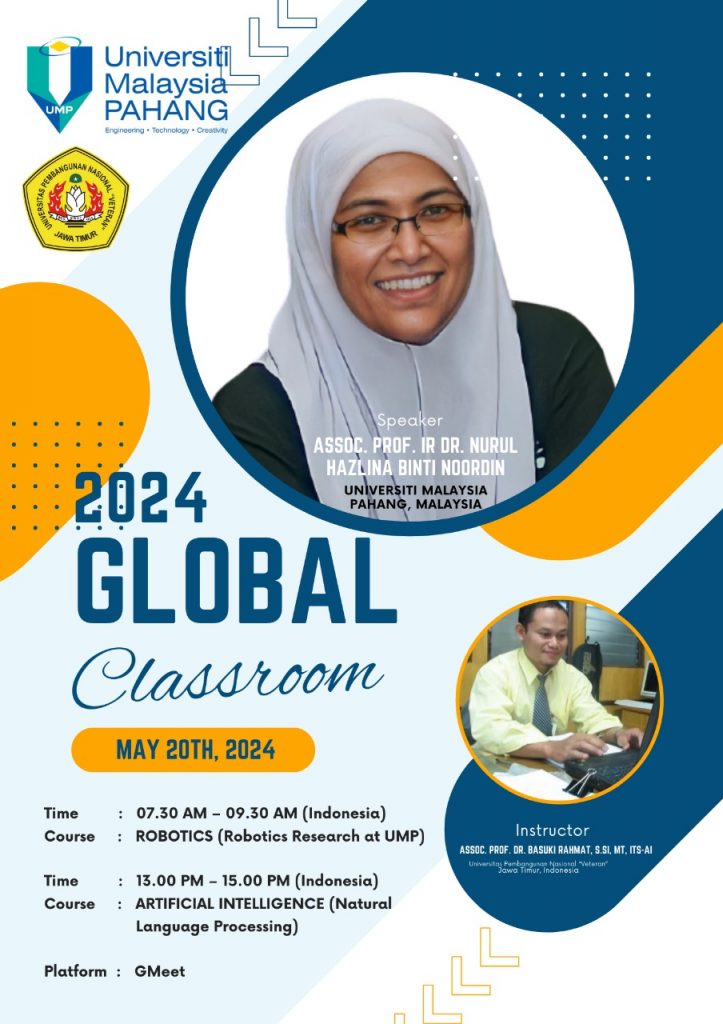
Month: May 2024
URP and PSAD Projects
Well done everyone!
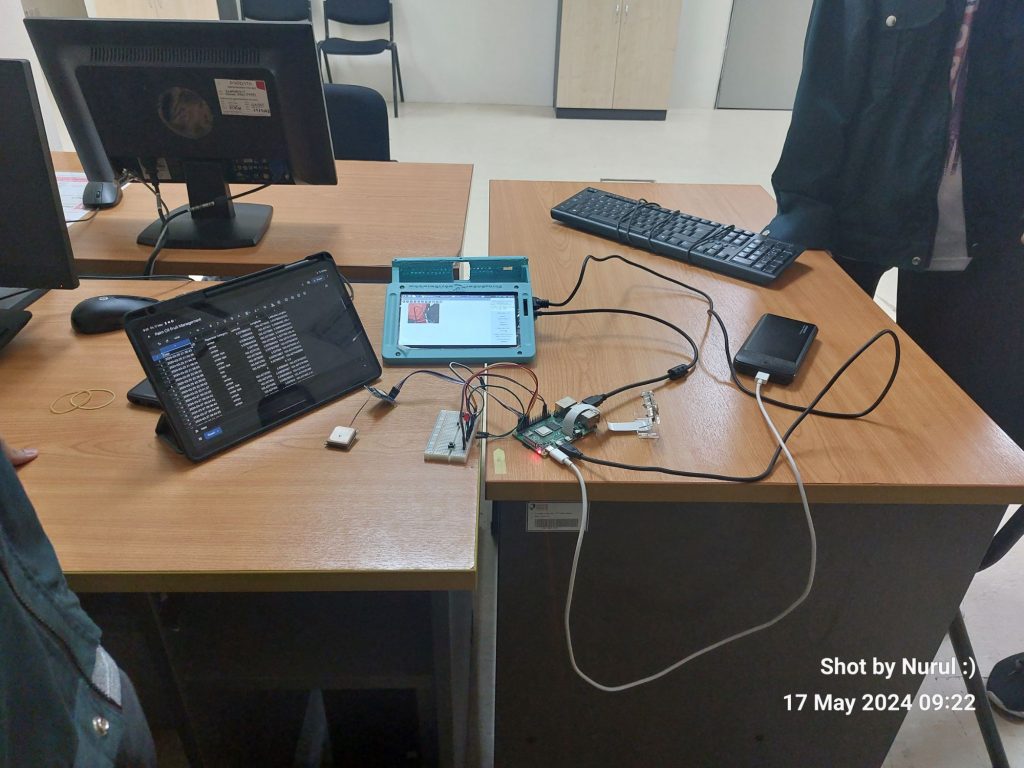




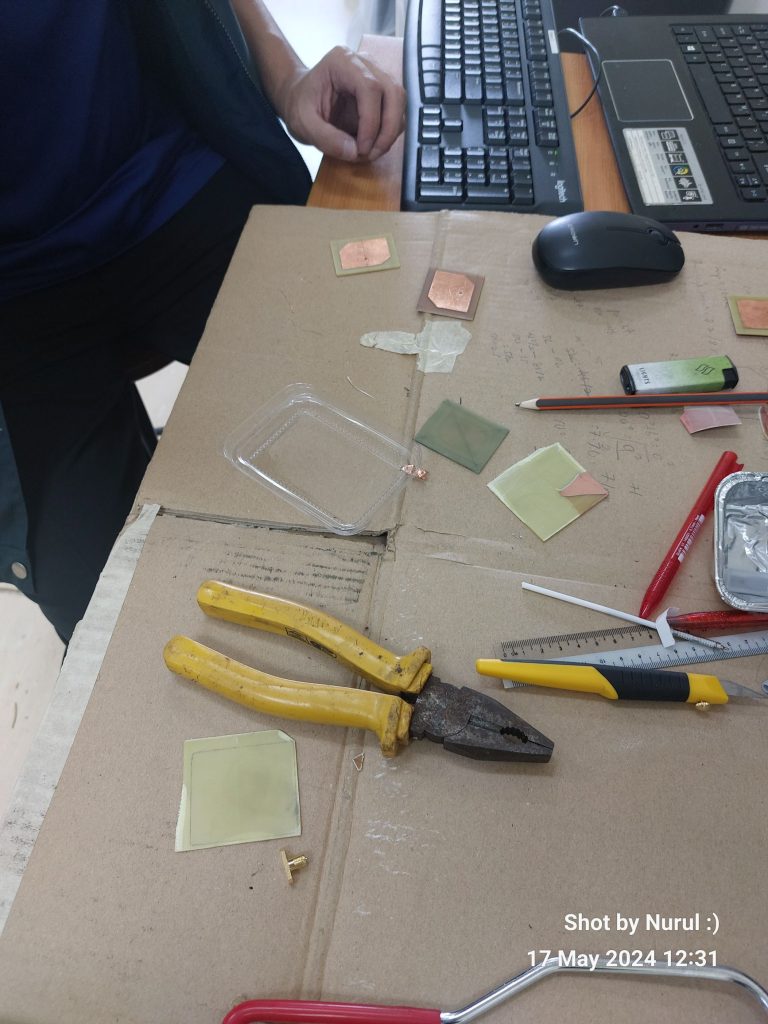
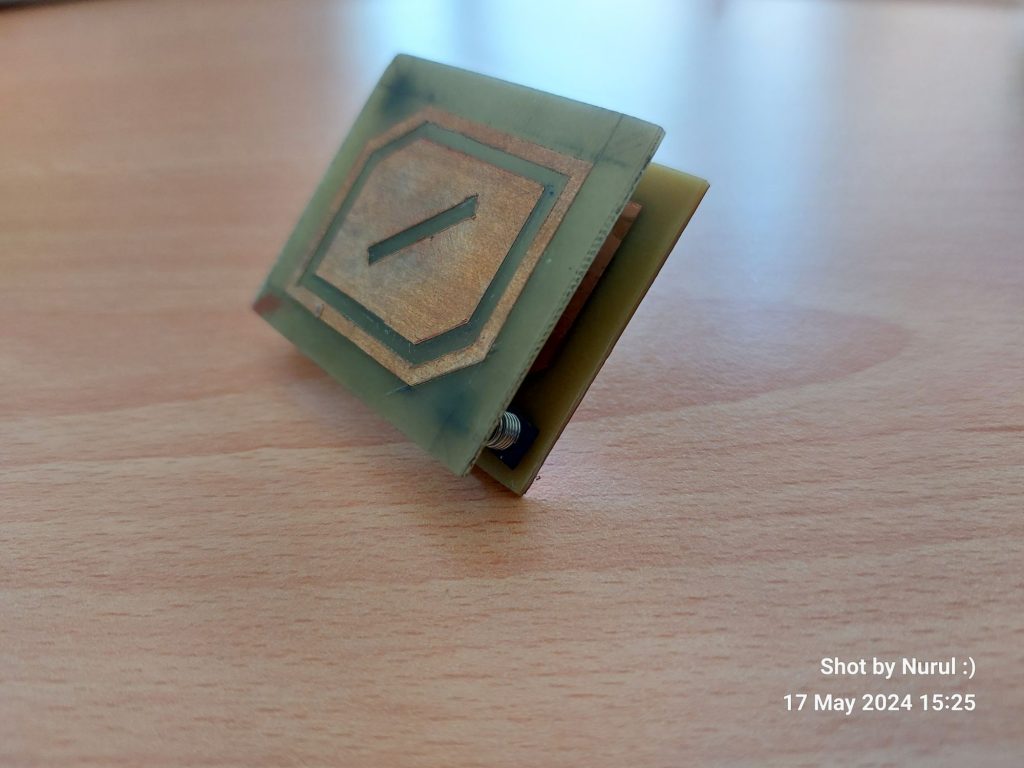

BTE1522 Innovation – Week 11 – Global Classroom Dr Basuki Rahmat: Universitas Pembangunan Nasional “Veteran” Jawa Timur
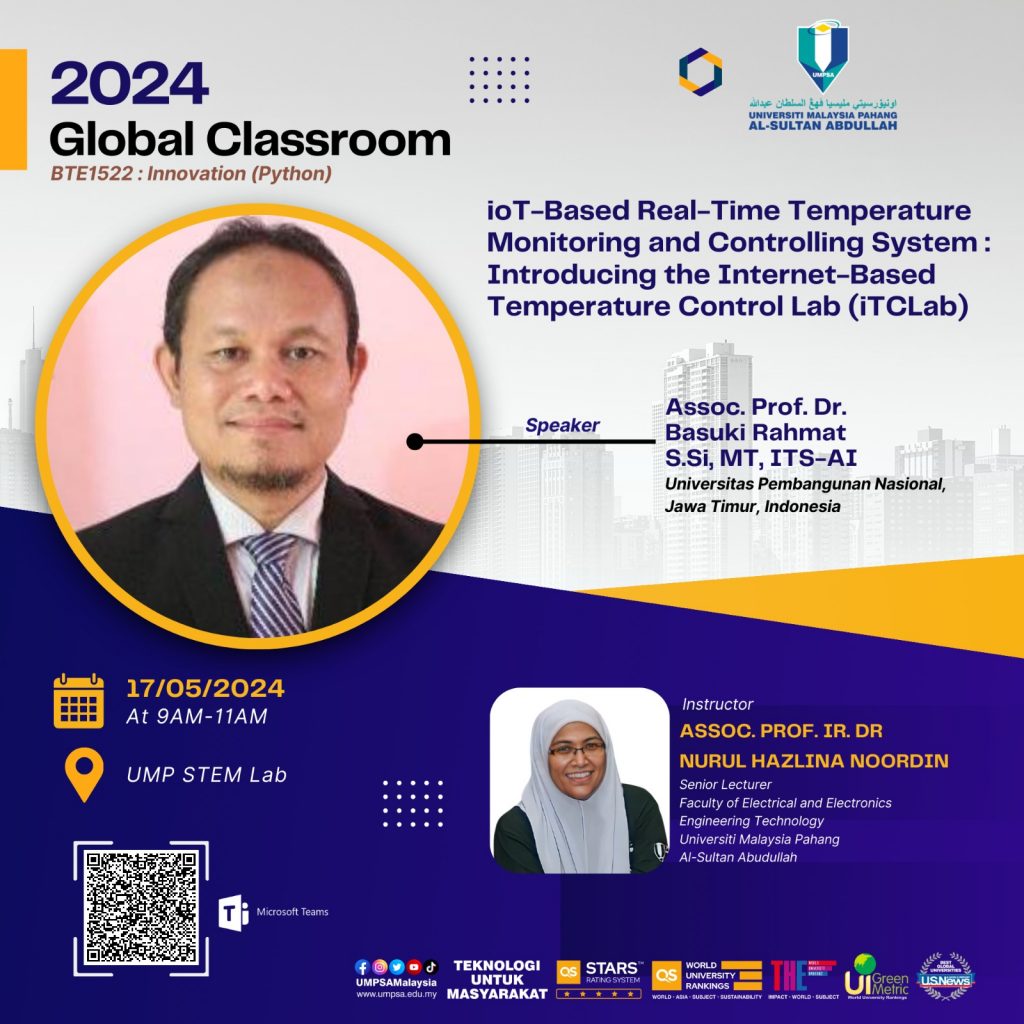
Today’s global classroom session was an honor as I had the privilege of hosting Dr. Basuki Rahmat from Universitas Pembangunan Nasional “Veteran” Jawa Timur. Dr. Basuki’s expertise in IoT-Based Real-Time Temperature Monitoring and Controlling System, particularly the introduction of the Internet-Based Temperature Control Lab (iTCLab), enriched our learning experience and provided valuable insights into the subject matter.
Here’s a recap of today’s session:
- Navigating IoT Platform Selection – Choosing the right IoT platform is crucial for ensuring smooth data transmission, scalability, and compatibility with existing systems. This highlights the importance of evaluating different platforms based on factors like ease of integration, security features, data analytics capabilities, and support for industry standards.
- Crafting Robust IoT-Based Temperature Monitoring Systems – Designing an IoT-based temperature monitoring and control system requires careful consideration of various factors, including sensor selection, data transmission protocols, and remote control interfaces. This underscores the significance of robust system design to meet specific application requirements while maintaining reliability and efficiency.Understanding Digital PID Controllers and Input Limits:In IoT-based temperature control systems, understanding the limitations of digital PID controllers in receiving input is crucial. This underscores the importance of comprehending the operational characteristics and limitations of PID controllers to optimize system performance and ensure stability. By understanding how PID controllers operate and their impact on temperature control, students can effectively tune parameters and address input limitations for enhanced system efficiency.
- Exploring Applications of iTCLab Temperature Monitoring Systems – The iTCLab temperature monitoring and control system offers versatile applications across various industries, including manufacturing, agriculture, healthcare, and environmental monitoring. Recognizing the system’s ability to provide precise temperature control for quality assurance, process optimization, and regulatory compliance empowers students to envision innovative solutions tailored to specific industry needs.
- Optimizing MQTT for Low-Power Devices – Acknowledging the importance of energy efficiency and resource optimization in IoT deployments, optimizing MQTT for low-power devices involves minimizing data overhead, reducing transmission frequency, and implementing power-saving techniques. By mastering MQTT optimization techniques, students can design efficient and sustainable IoT solutions for diverse applications.
Today’s global classroom session gives a valuable insights into the IoT-based real-time temperature monitoring and controlling system, focusing on the technological advancements, challenges, and opportunities in the field.
The interactive discussions and active participations from students highlighted the diverse applications, design considerations, and optimization strategies relevant to IoT deployments.
I look forward to such collaborative learning environments and engage in knowledge-sharing initiatives to drive innovation and address real-world challenges effectively.


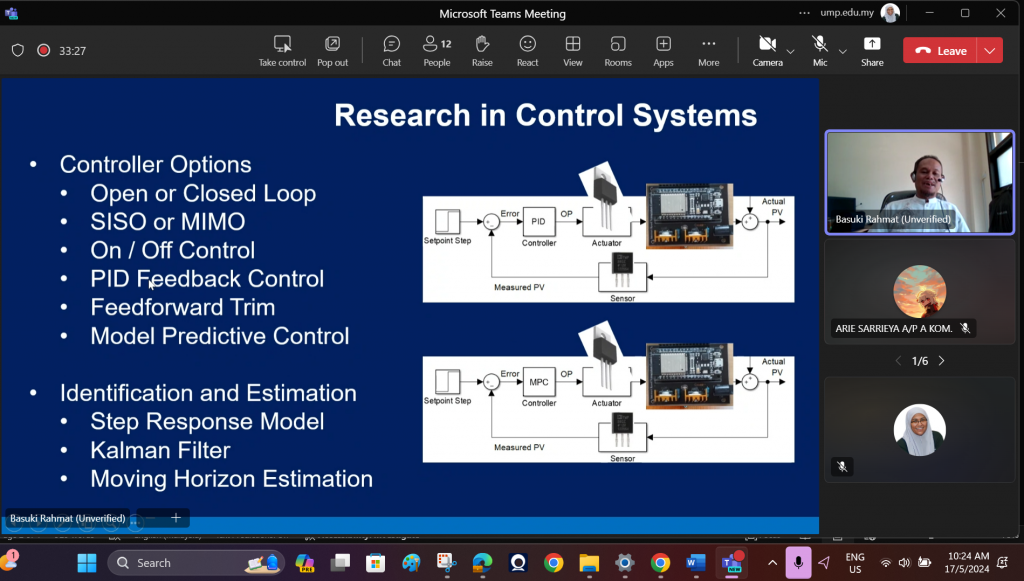





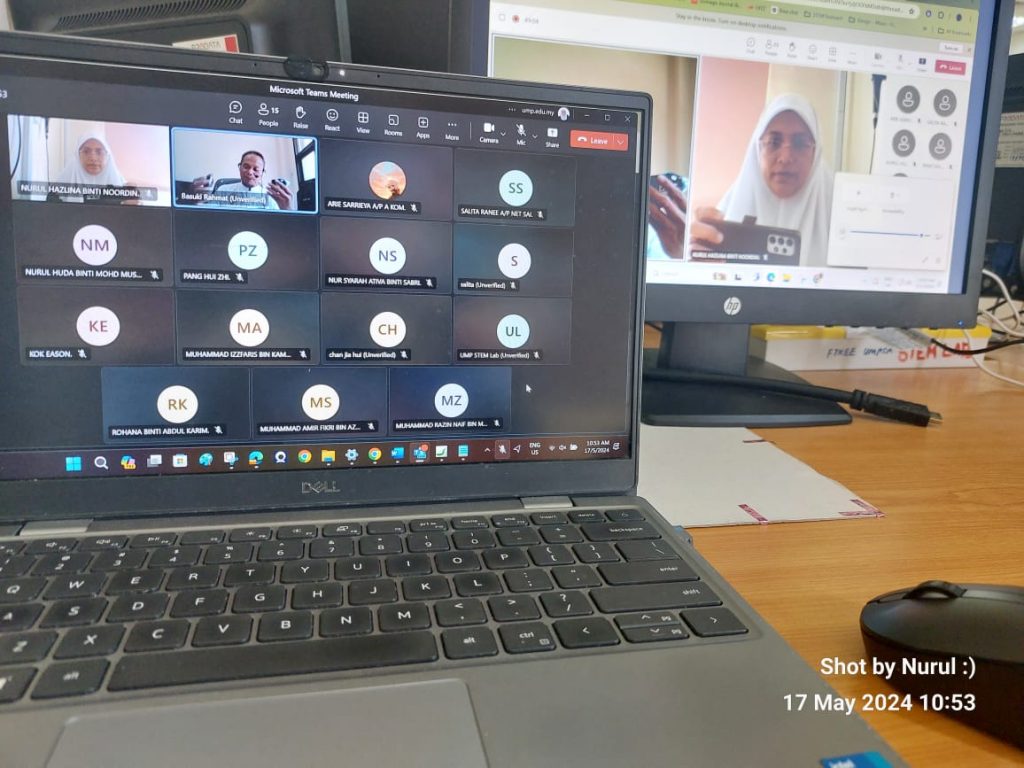
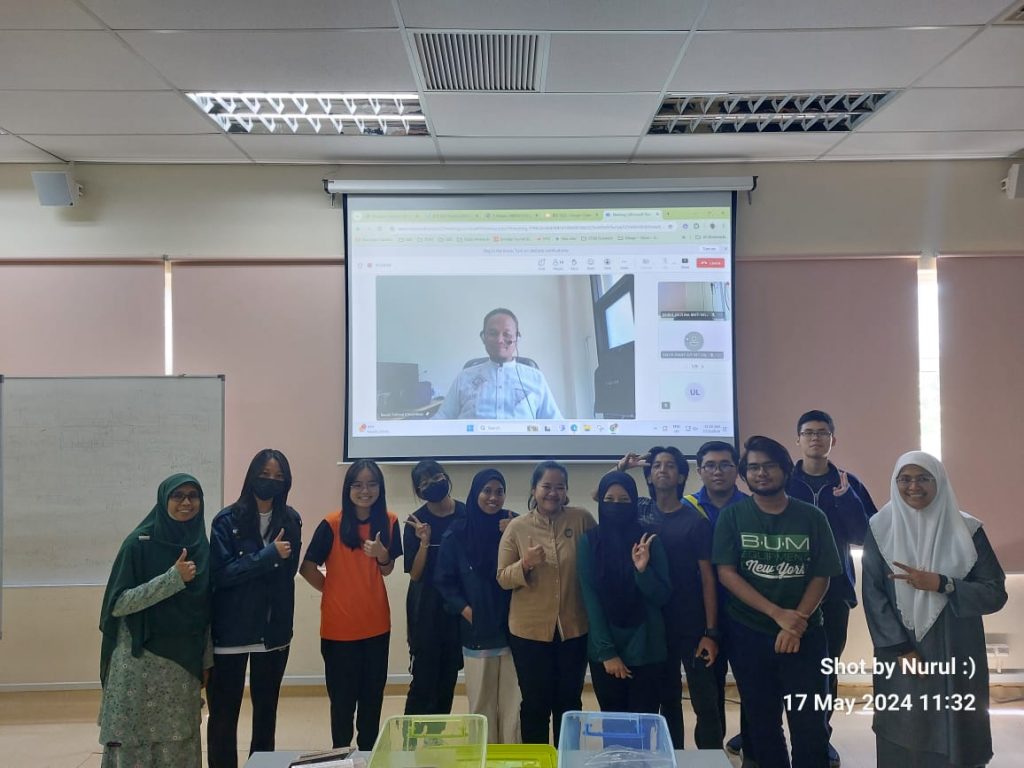

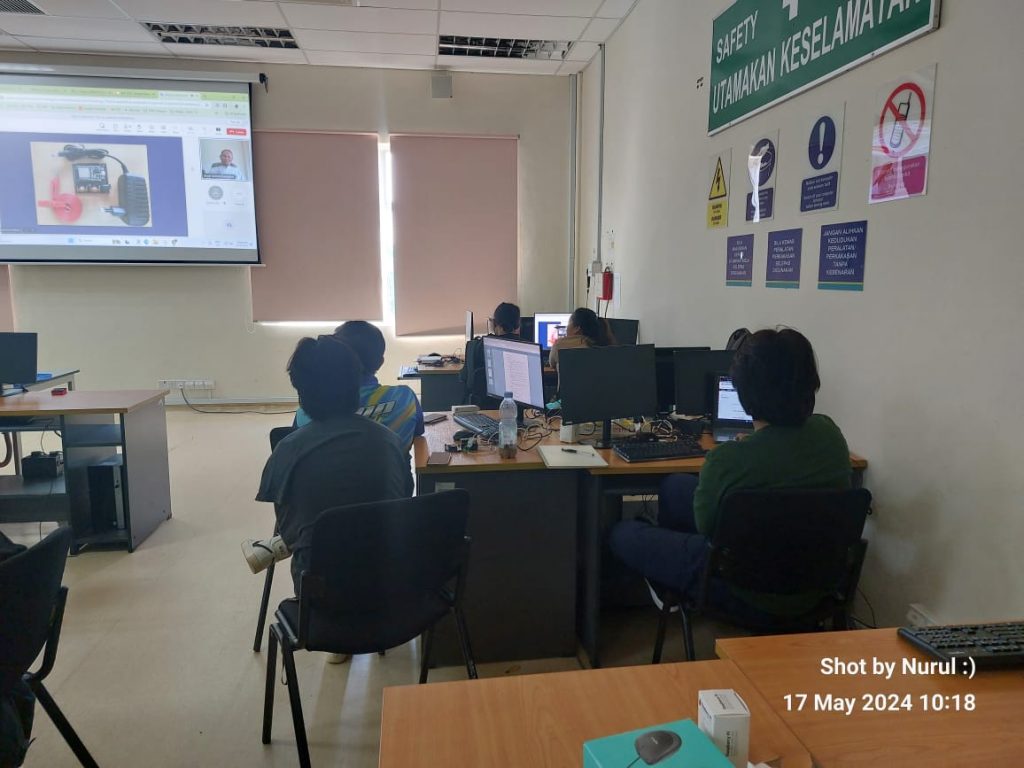
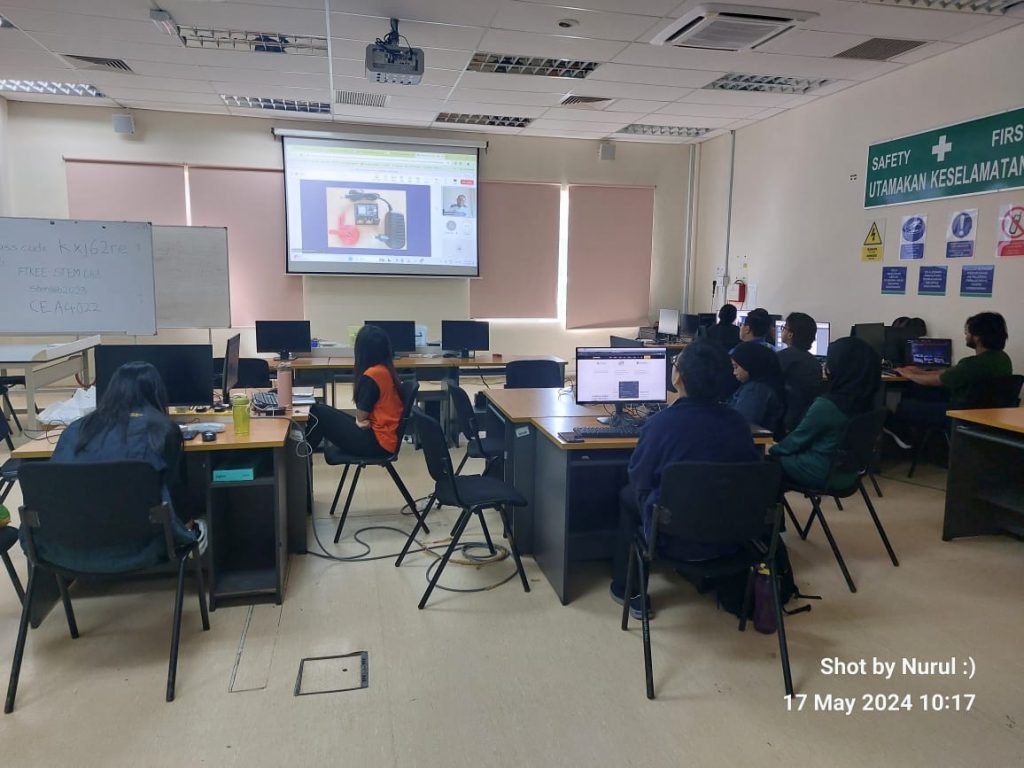
Mesyuarat Fakulti Mei 2024

Arduino Programming Course Synopsis
Welcome to UMP STEM Lab Arduino programming course! In this program, we look into Arduino microcontrollers and explore various activities to help you grasp the fundamentals of programming and electronics. Whether you’re a beginner or have some experience, this course will provide you with the knowledge and skills to create your own projects and inventions.

In our course, you’ll engage in a series of hands-on activities designed to familiarize you with Arduino programming and electronics. You’ll start with Activity 1, where you’ll learn the basics of controlling multiple LEDs using Arduino digital pins. Moving on to Activity 2, you’ll simulate a traffic light system, gaining insights into sequential programming concepts. Activity 3 introduces you to light sensing using a photoresistor, delving into analog input principles. Next, in Activity 4, you’ll interface analog sensors with Arduino, controlling digital outputs based on sensor readings. Activity 5 focuses on integrating an OLED display for data visualization in your projects.
In Activity 6, you’ll explore distance measurement using ultrasonic sensors, with applications such as obstacle detection. Activity 7 involves interfacing potentiometers and buttons to interact with your projects.

Then, in Activity 8, you’ll grasp servo motor control to add dynamic motion to your creations. Activity 9 combines OLED displays and ultrasonic sensors for advanced projects, offering both visual feedback and distance sensing capabilities. Finally, Activity 10 explores color mixing and control of RGB LEDs, enabling you to create captivating visual effects. Through these activities, you’ll build essential skills and knowledge to embark on your Arduino programming journey.

Objectives
- Through practical exercises and projects, participants will actively engage with Arduino programming, allowing them to familiarize themselves with coding practices, syntax, and techniques specific to the Arduino platform. By working directly with the hardware, they’ll gain confidence in their programming abilities and develop a deeper understanding of how code interacts with physical components.
- In addition to programming, participants will learn about fundamental electronic components such as LEDs, sensors, motors, and displays. They’ll explore how these components interface with Arduino boards, understanding concepts like voltage, current, and digital and analog signals. This knowledge will empower them to design and troubleshoot circuits effectively.
- A key aspect of Arduino programming is interfacing with sensors to gather data and controlling actuators to affect the physical world. Participants will learn how to read sensor data accurately, process it within their Arduino programs, and use that information to control motors, lights, displays, and other output devices. This skill is crucial for building interactive and responsive projects.
- Each activity in the course is designed as a project-based learning experience, where participants encounter real-world problems and challenges. By working through these projects, they’ll develop problem-solving skills, learn to debug and troubleshoot issues, and gain the confidence to tackle increasingly complex problems independently. This approach fosters creativity and innovation as participants learn to apply their knowledge to unique situations.

By the end of the course, participants will have acquired a solid foundation in Arduino programming, electronics, and project development. They’ll be equipped with the skills and knowledge necessary to conceive, design, and implement their own Arduino projects and inventions. Whether it’s designing a home automation system, a robotic prototype, or an interactive art installation, participants will have the tools to turn their ideas into reality.
Throughout the course, participants will not only learn the specific syntax and functions of the Arduino programming language but also fundamental programming concepts applicable to any programming language. These include iterative processes using loops, decision-making using conditional statements, and organizing code execution using sequential statements. Mastery of these programming skills enhances participants’ ability to write efficient, readable, and maintainable code, essential for any programming endeavor.
Arduino Programming 2024/3 – SBPI TAR Pekan
UMP STEM Lab Arduino Robotics Synopsis can be found here.
31 students and teachers of SBPI Tun Abdul Razak, Pekan (Batch 3) had participated in this program. Participants went through activities involving Arduino Programming and electronics systems.
Thank you Cikgu Hamidah for coordinating the communication between UMP STEM Lab and the school.





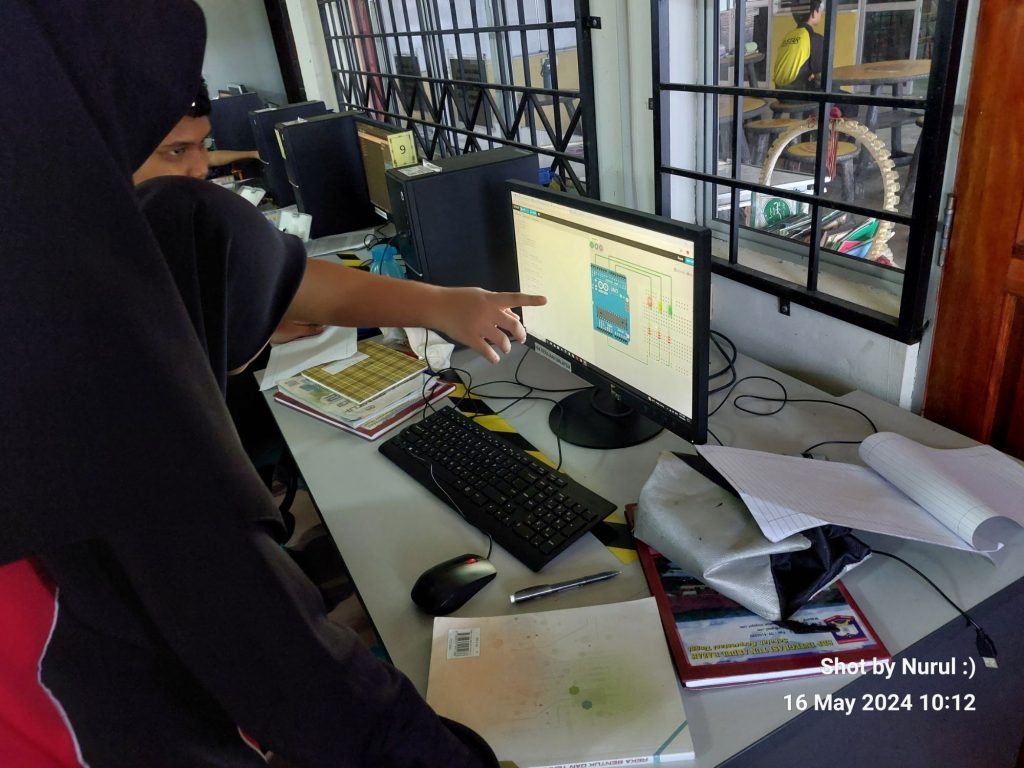
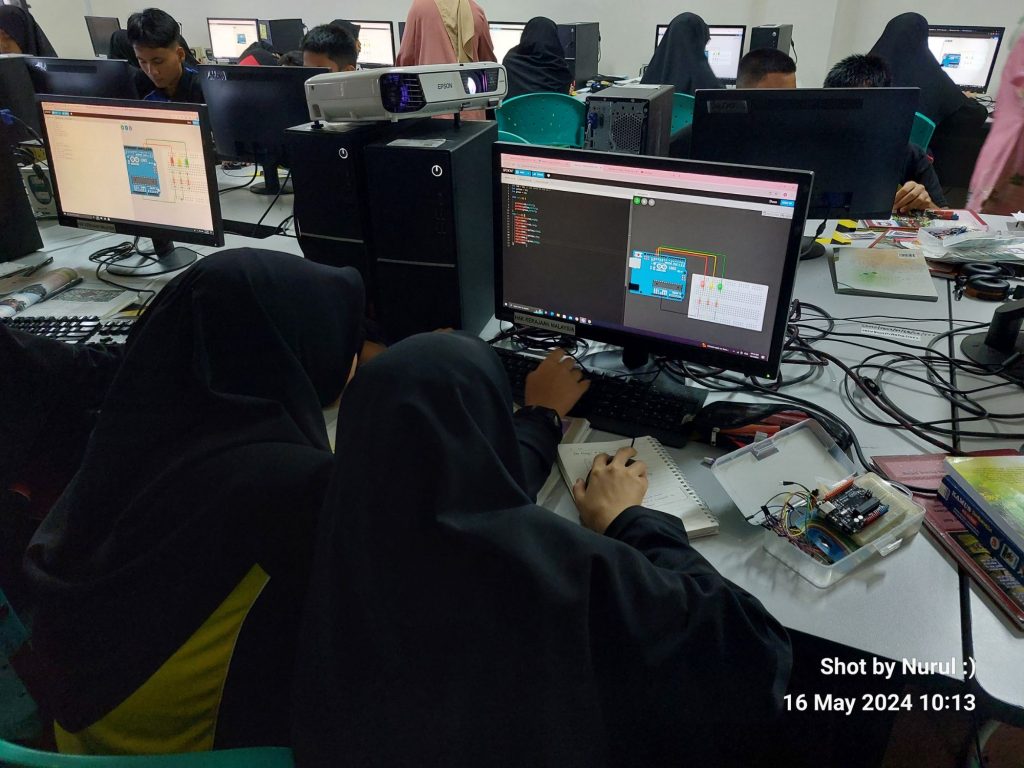
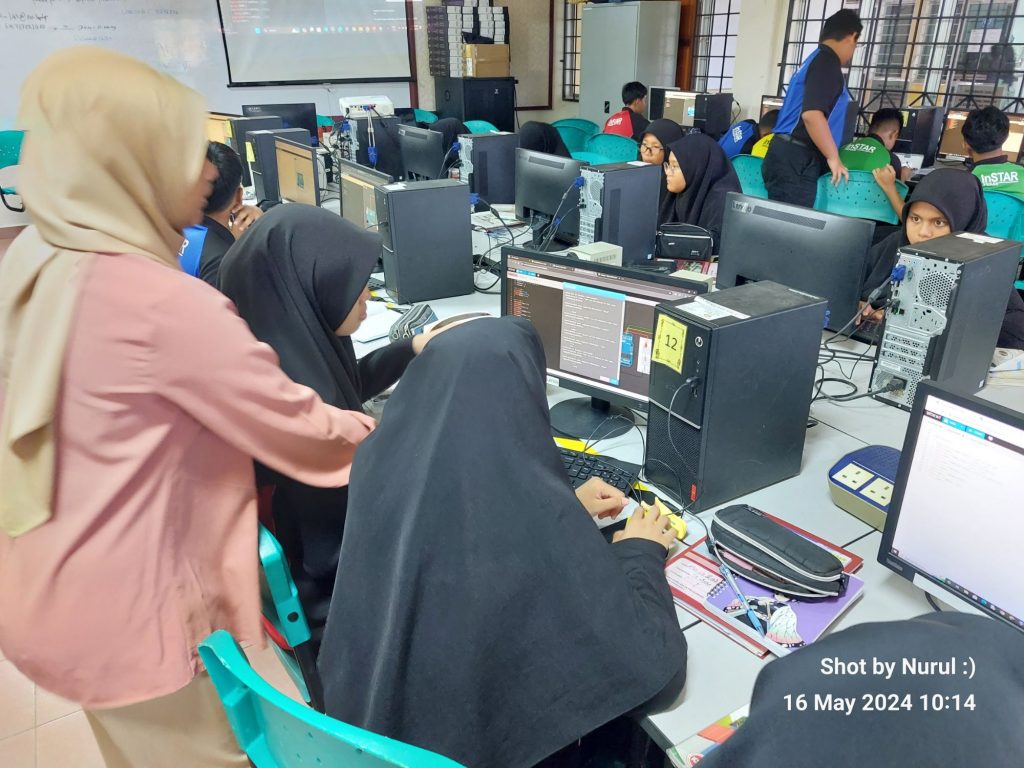
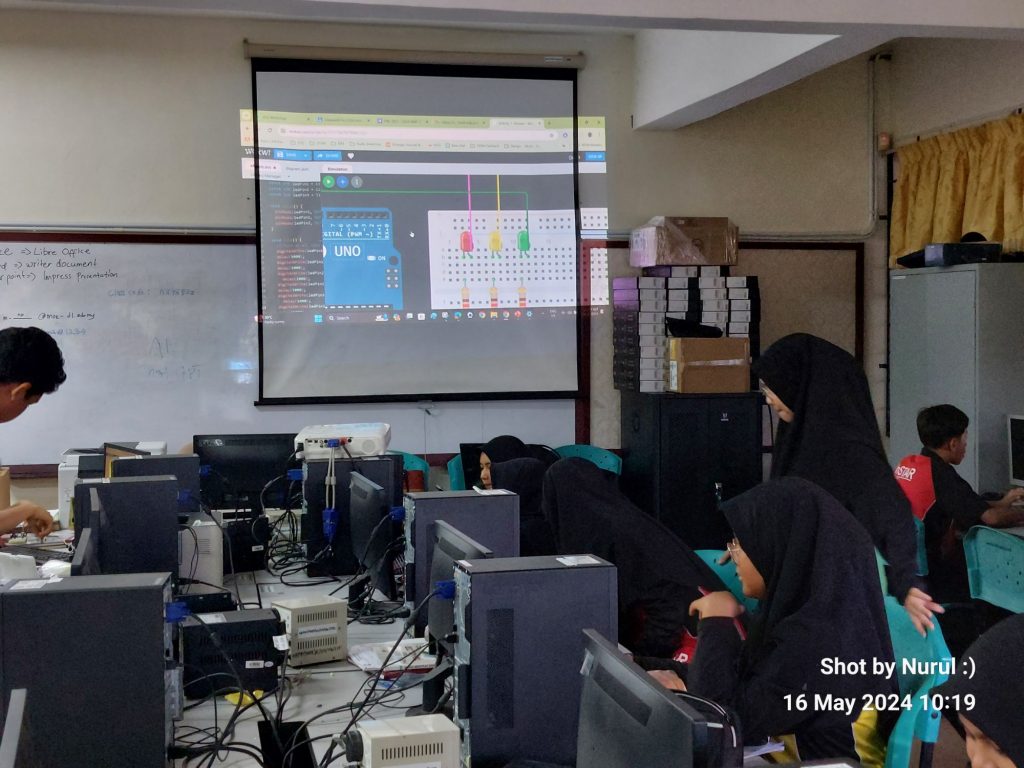
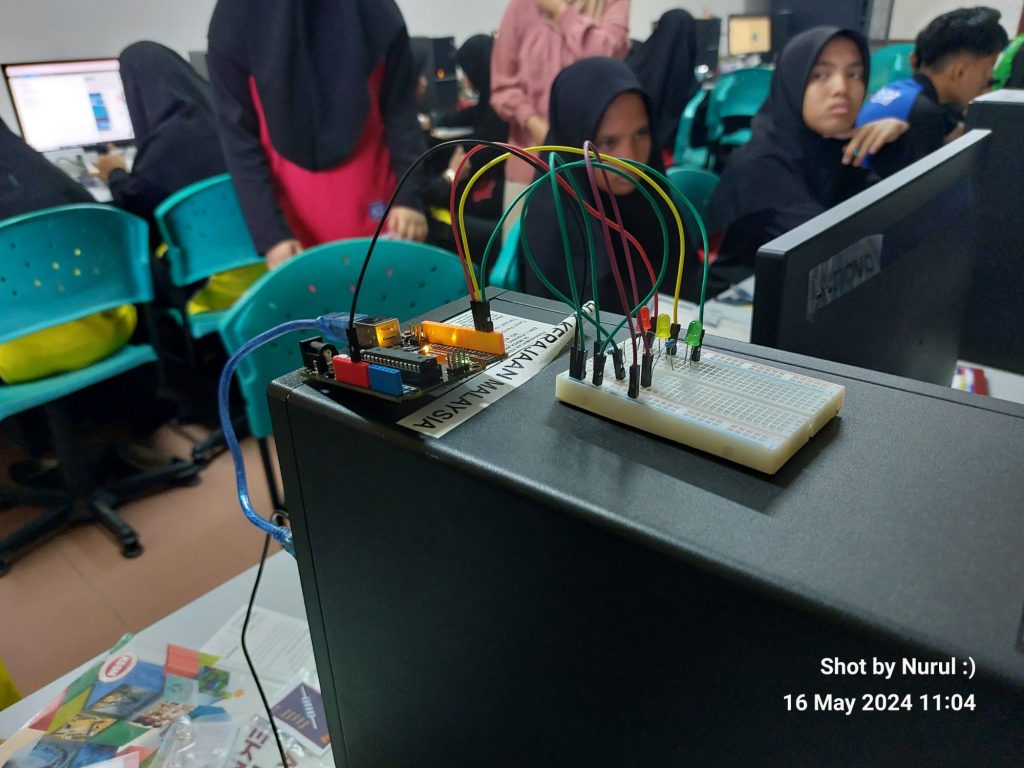
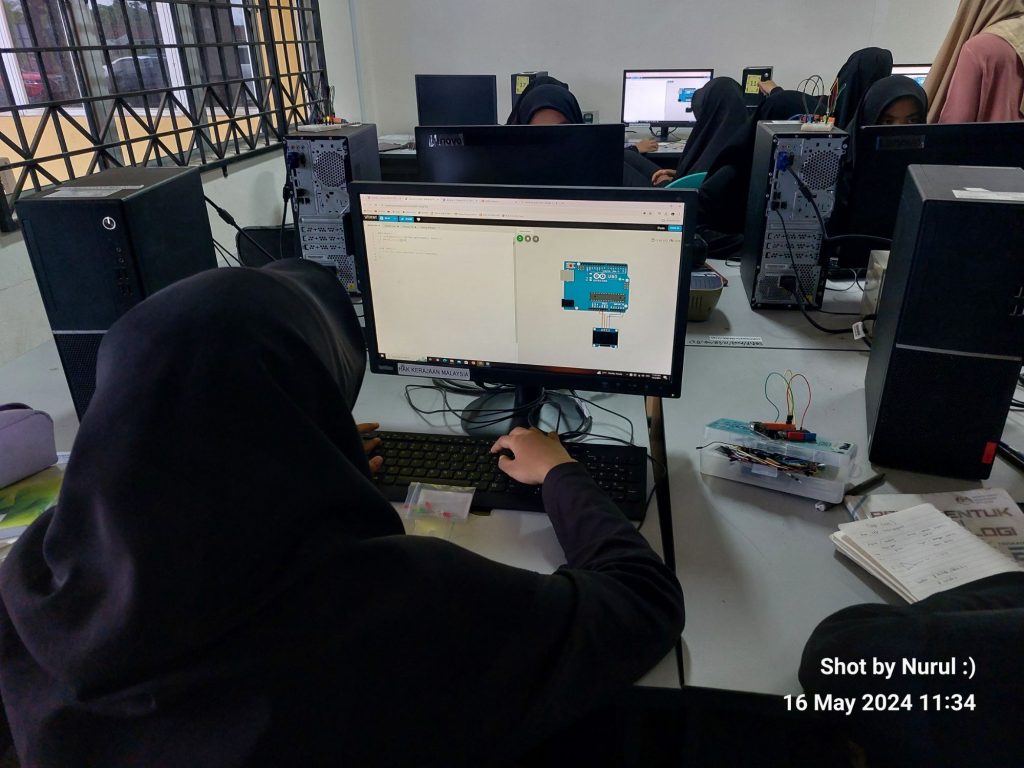
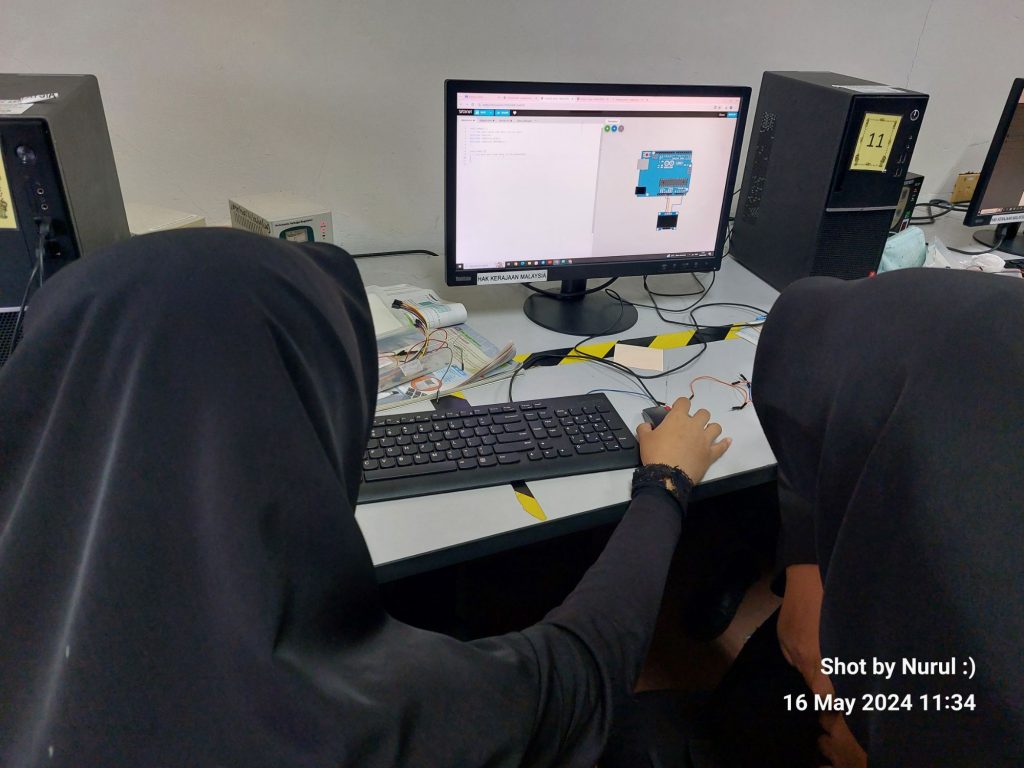

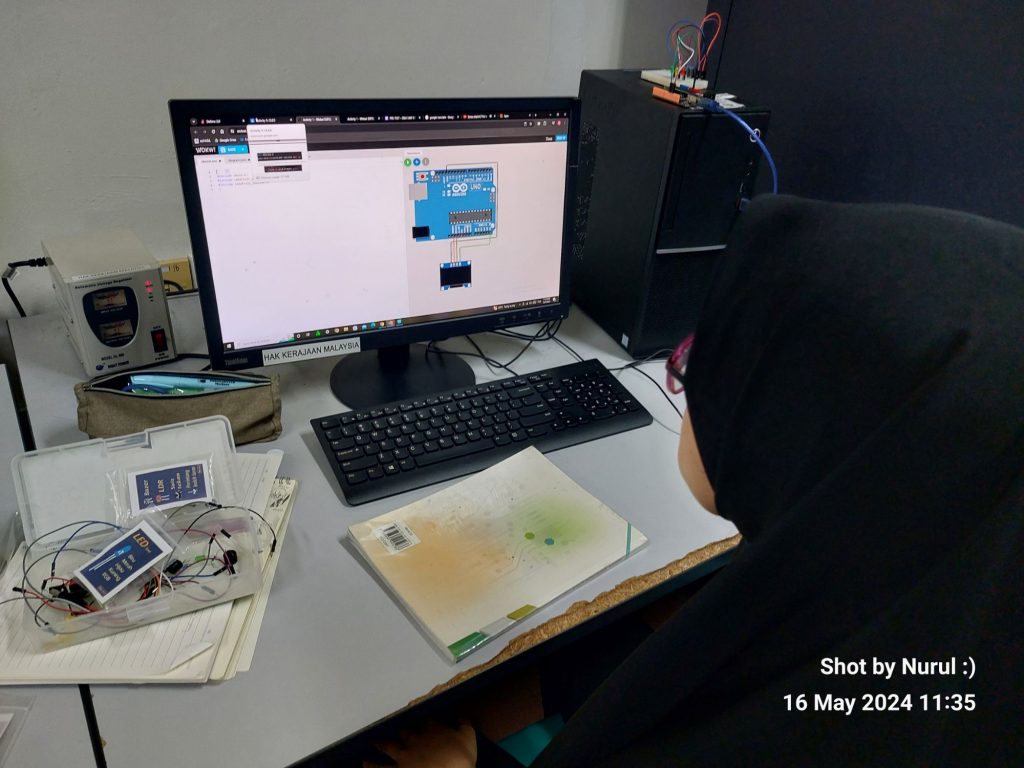






Arduino Programming 2024/2 – SBPI TAR Pekan
UMP STEM Lab Arduino Robotics Synopsis can be found here.
30 students and teachers of SBPI Tun Abdul Razak, Pekan (Batch 2) had participated in this program. Participants went through activities involving Arduino Programming and electronics systems.
Thank you Cikgu Hamidah for coordinating the communication between UMP STEM Lab and the school.



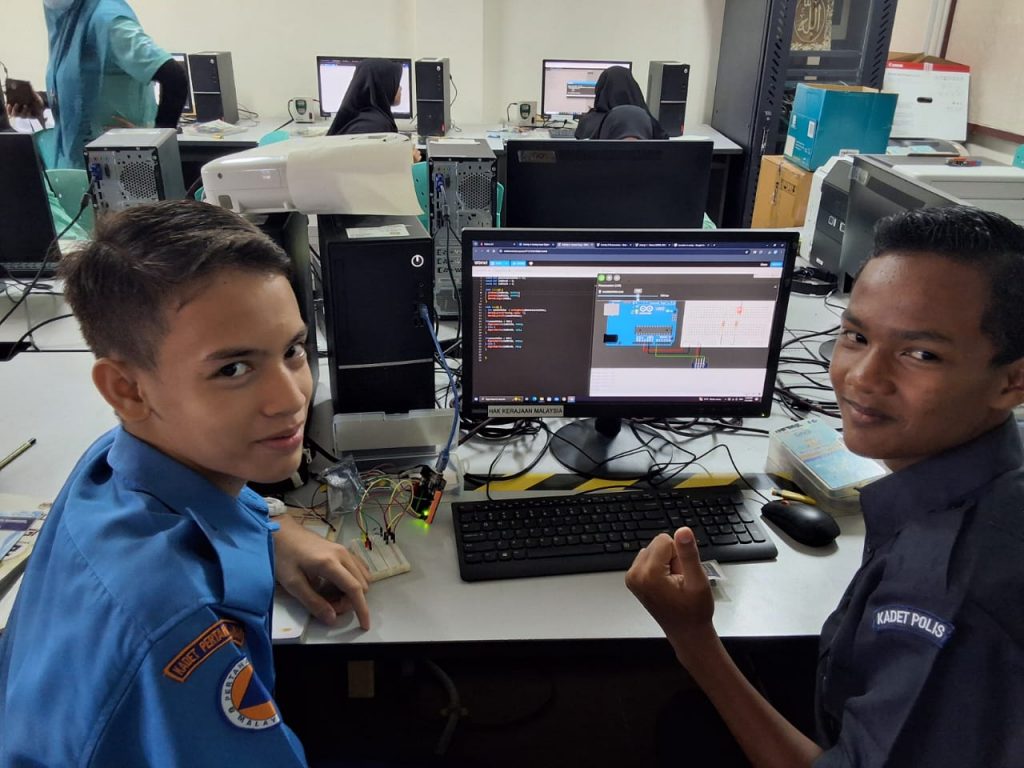

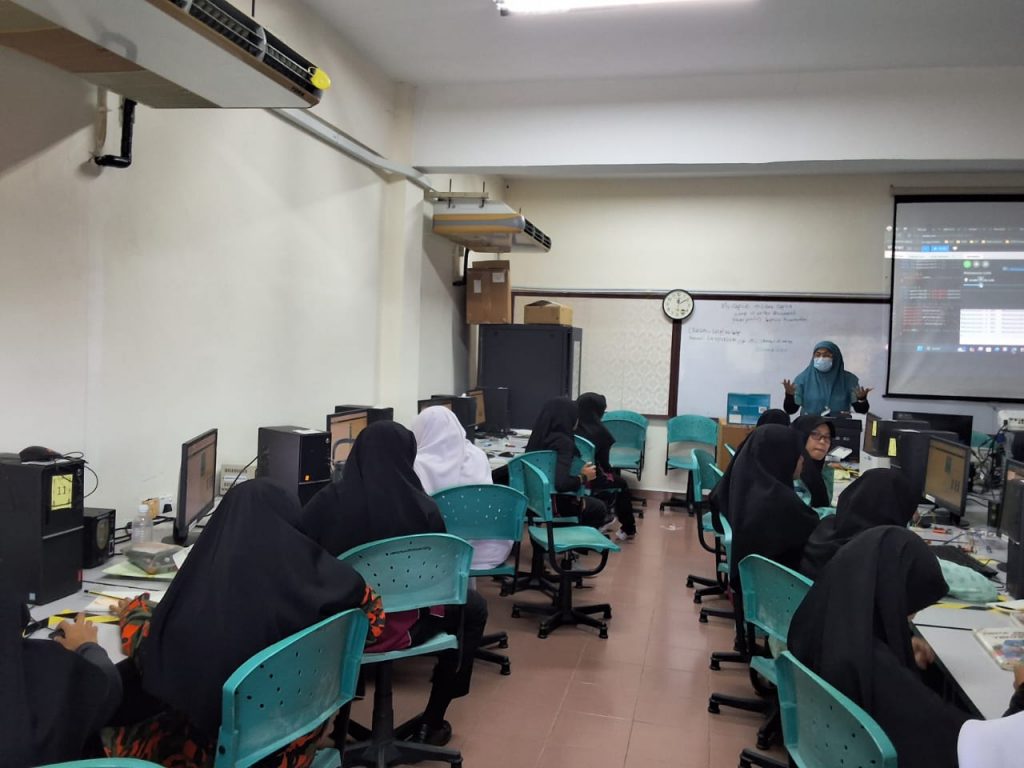
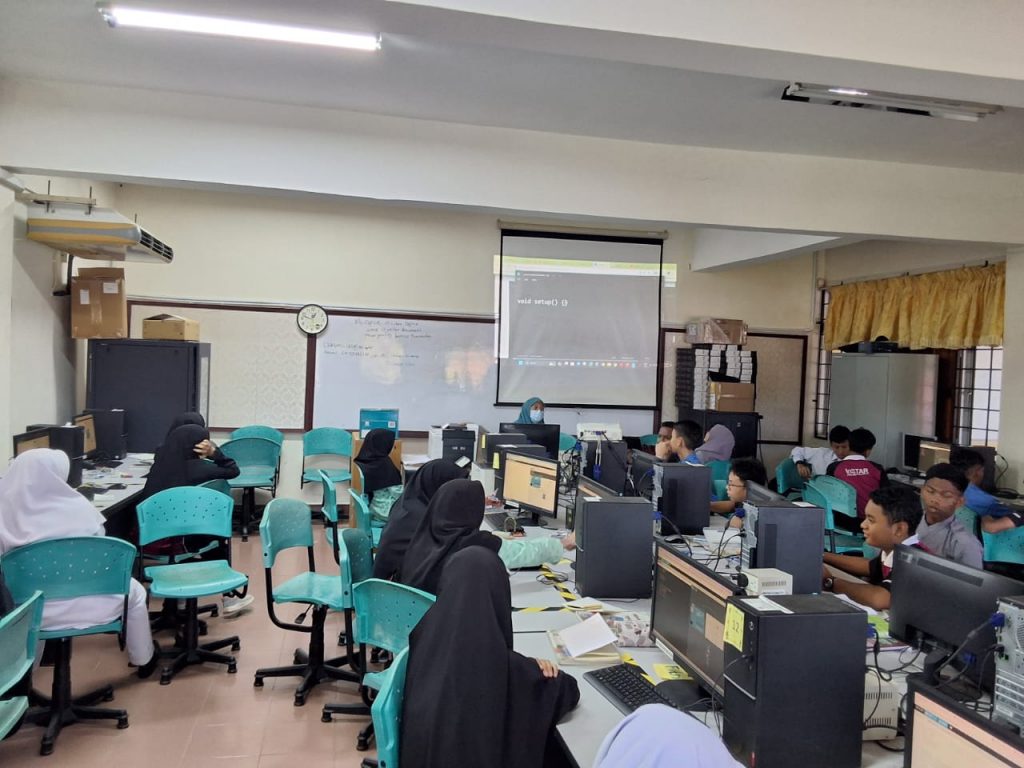
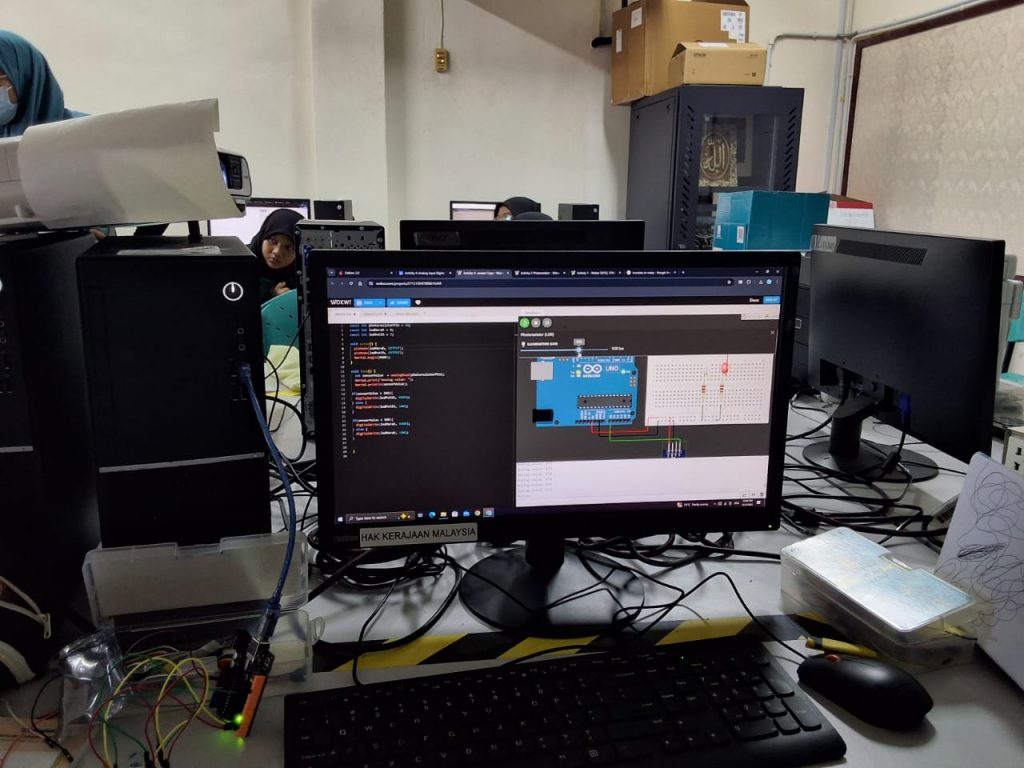


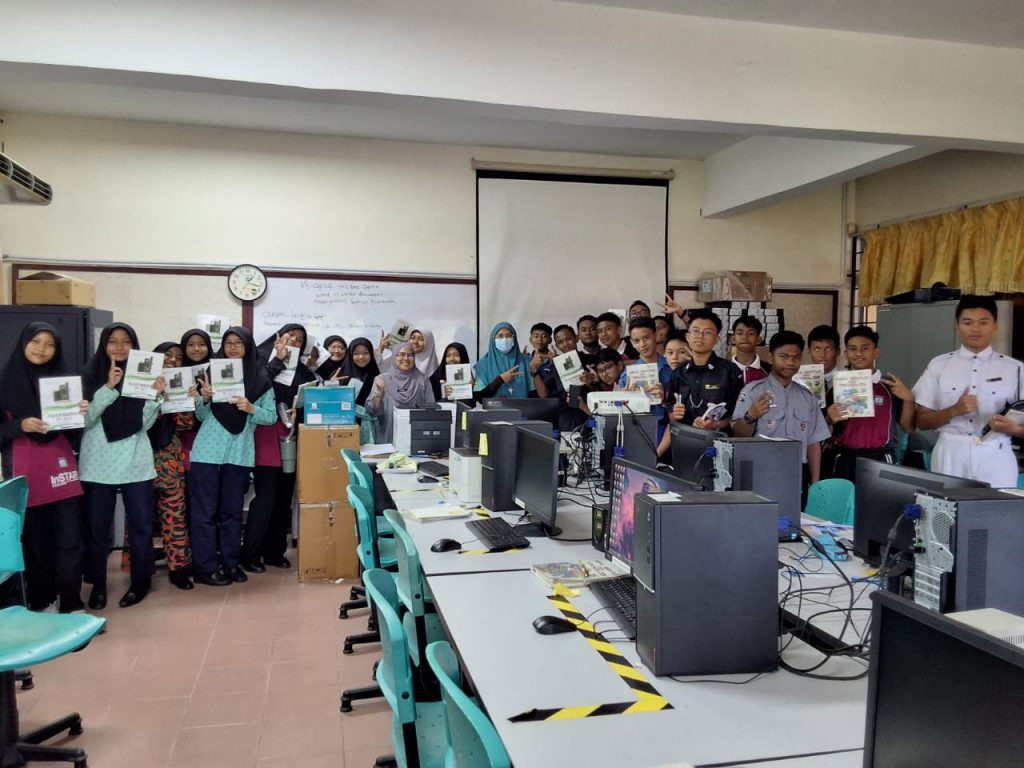



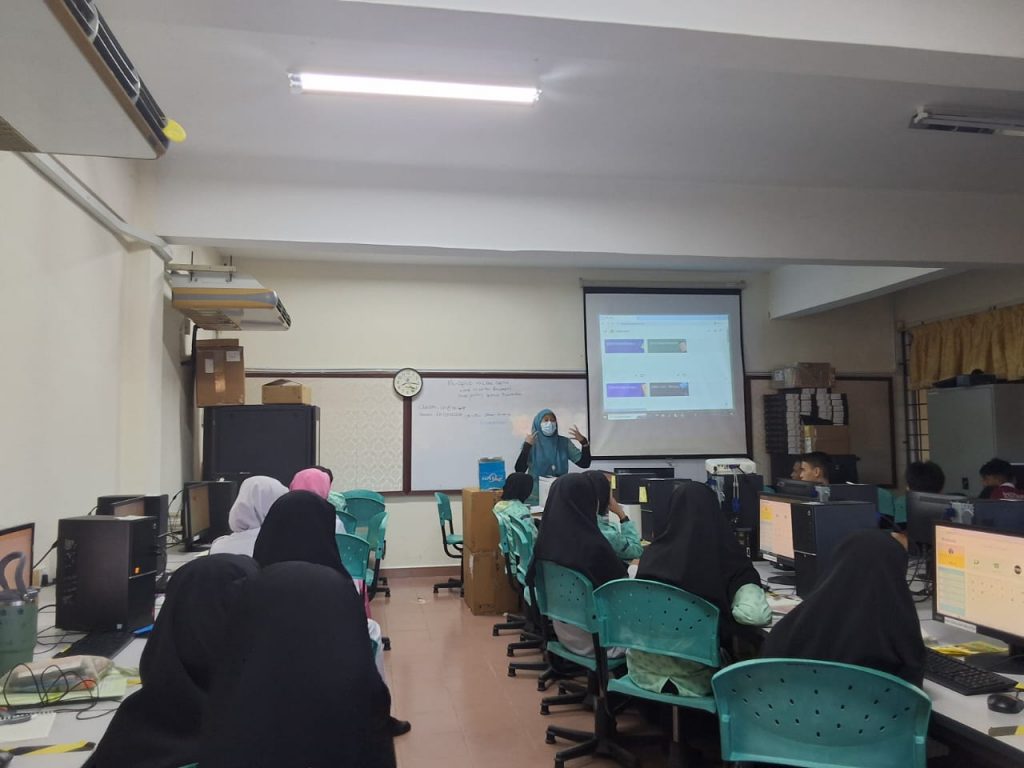
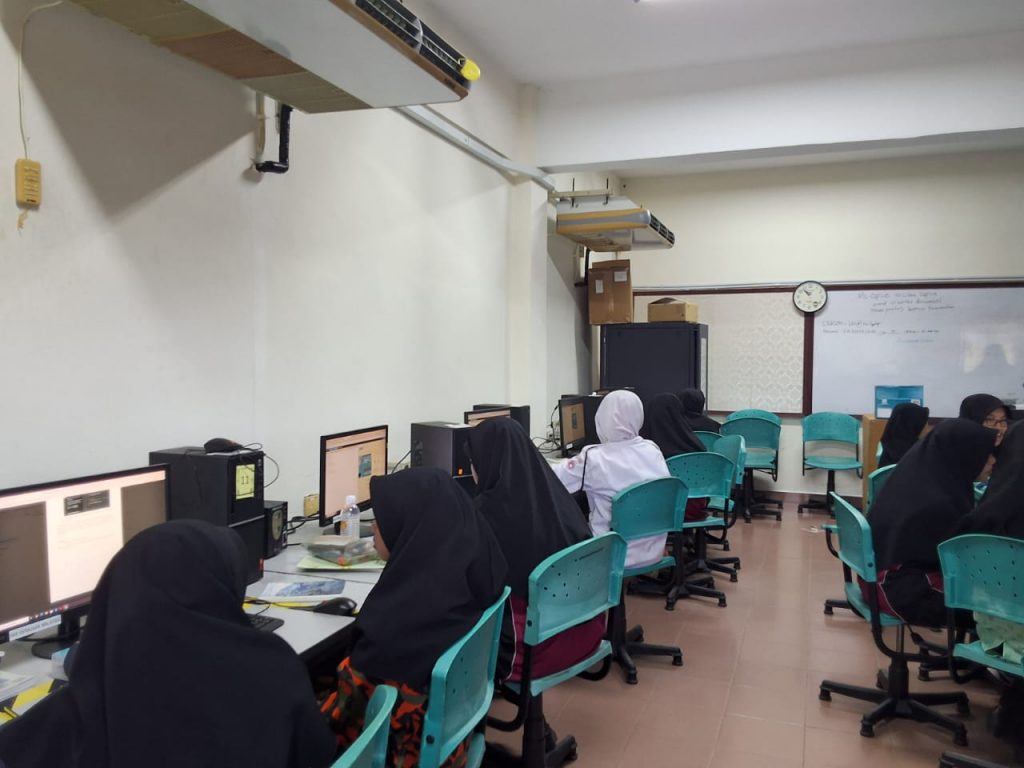

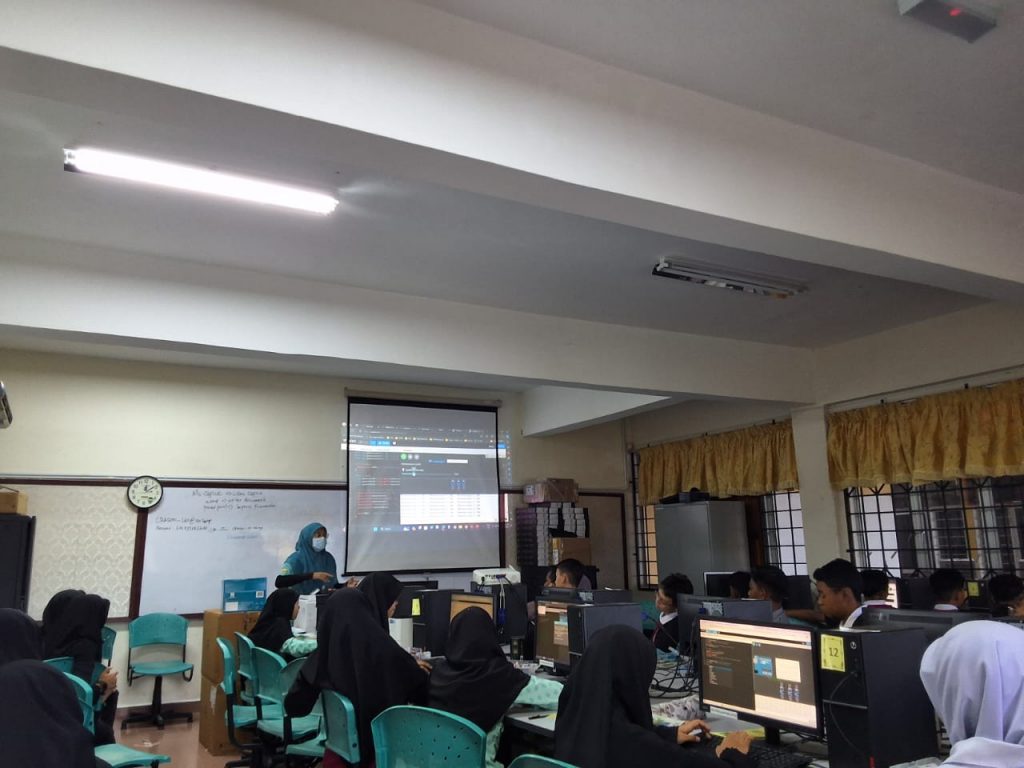
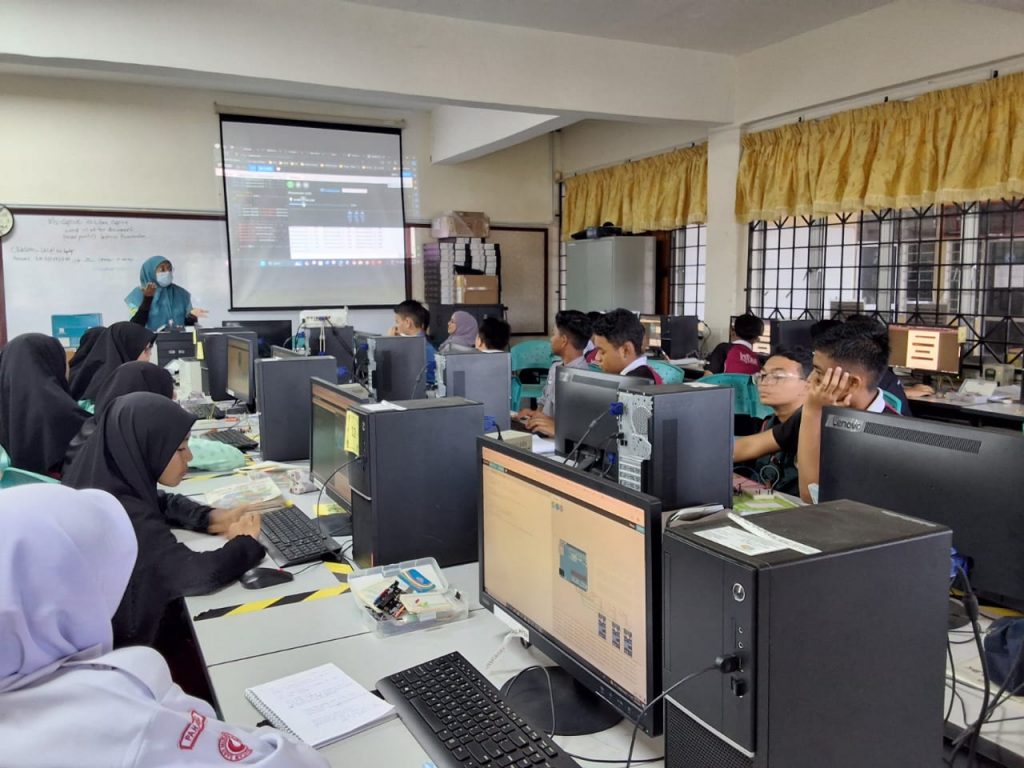
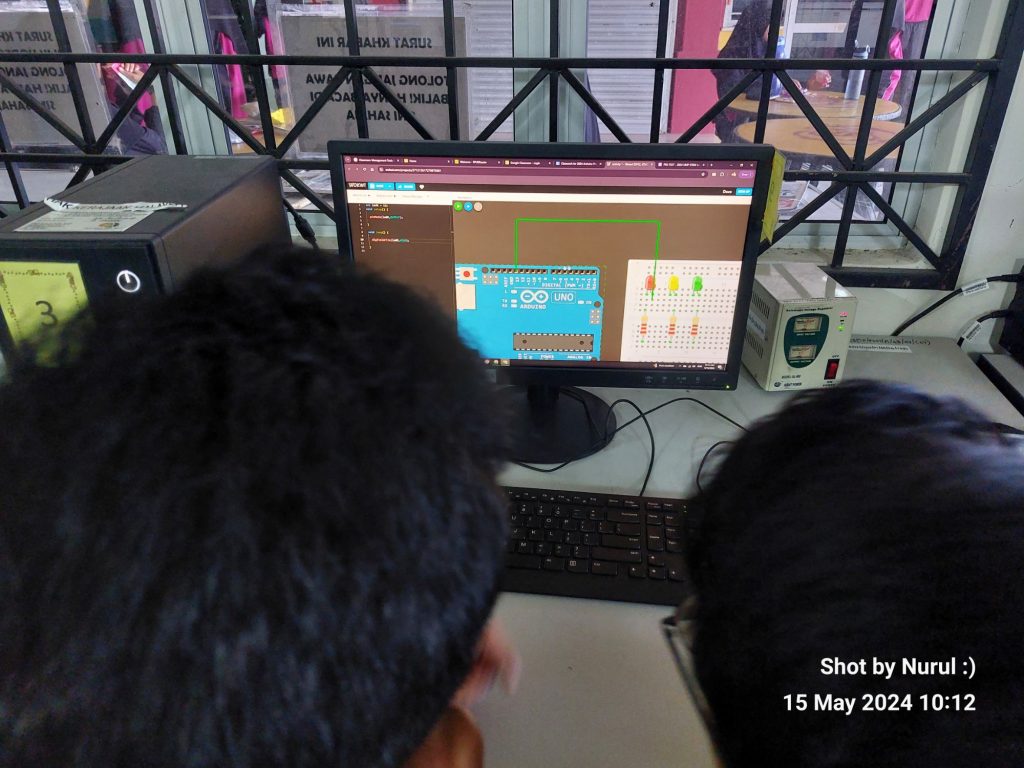
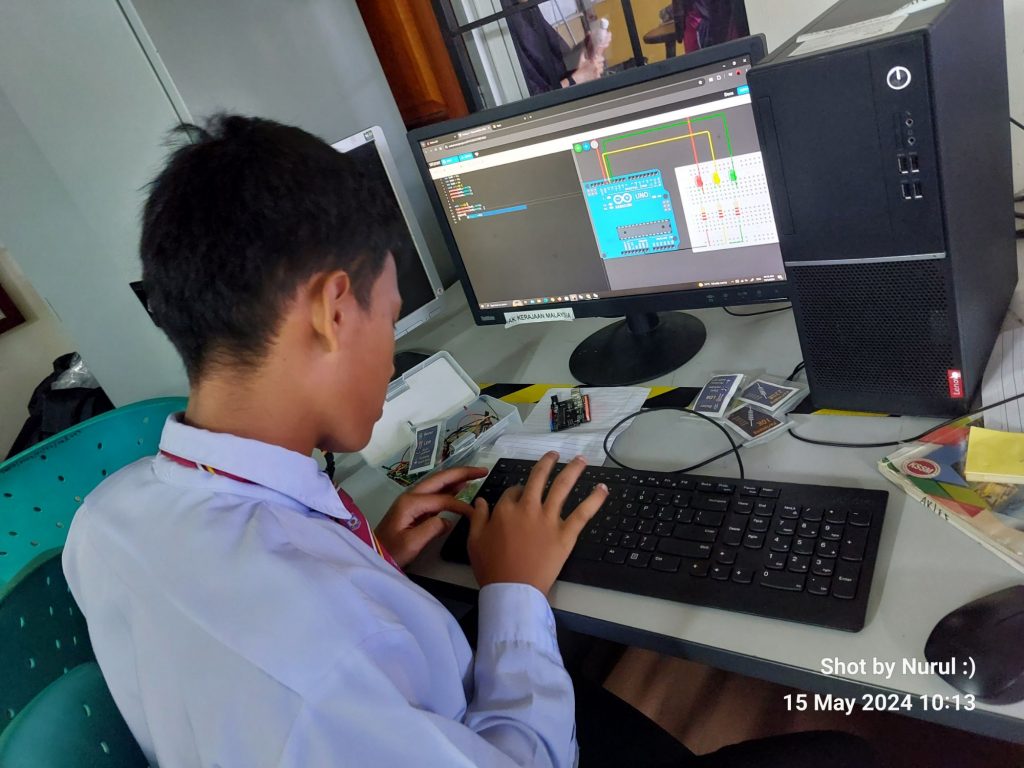
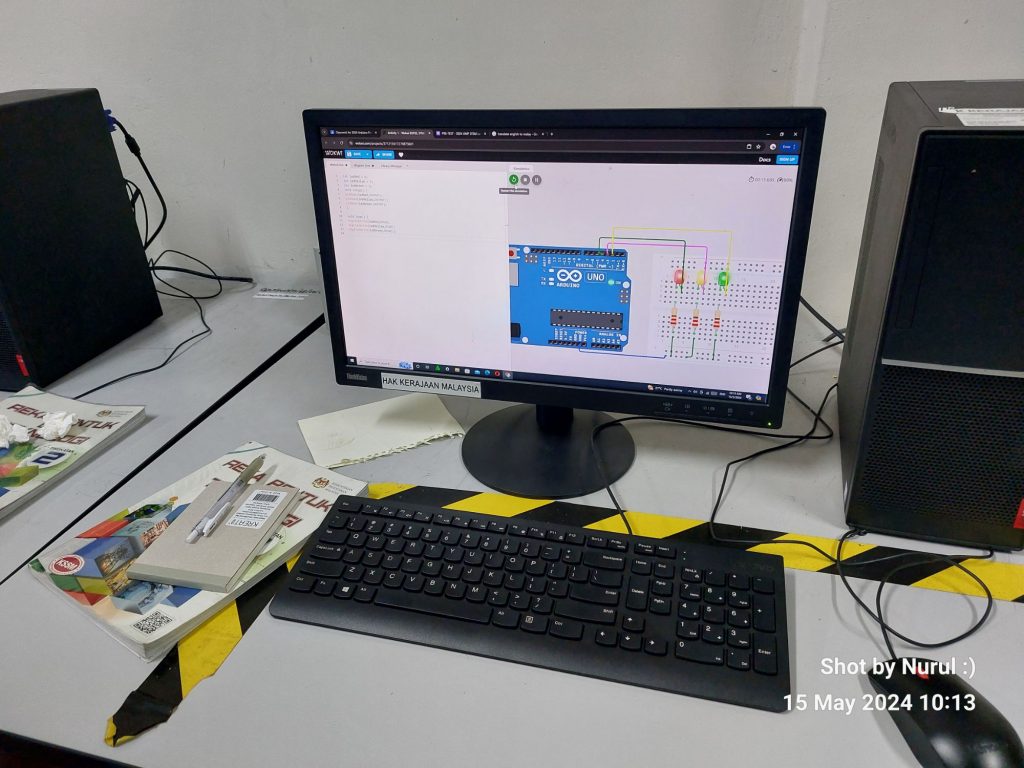
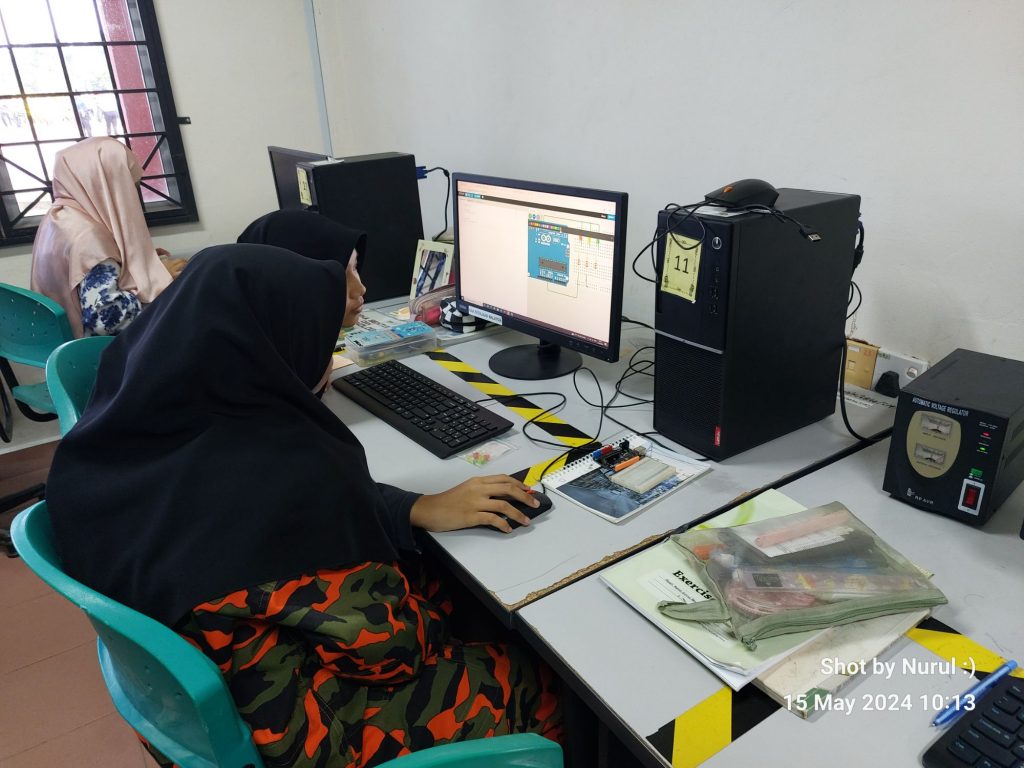
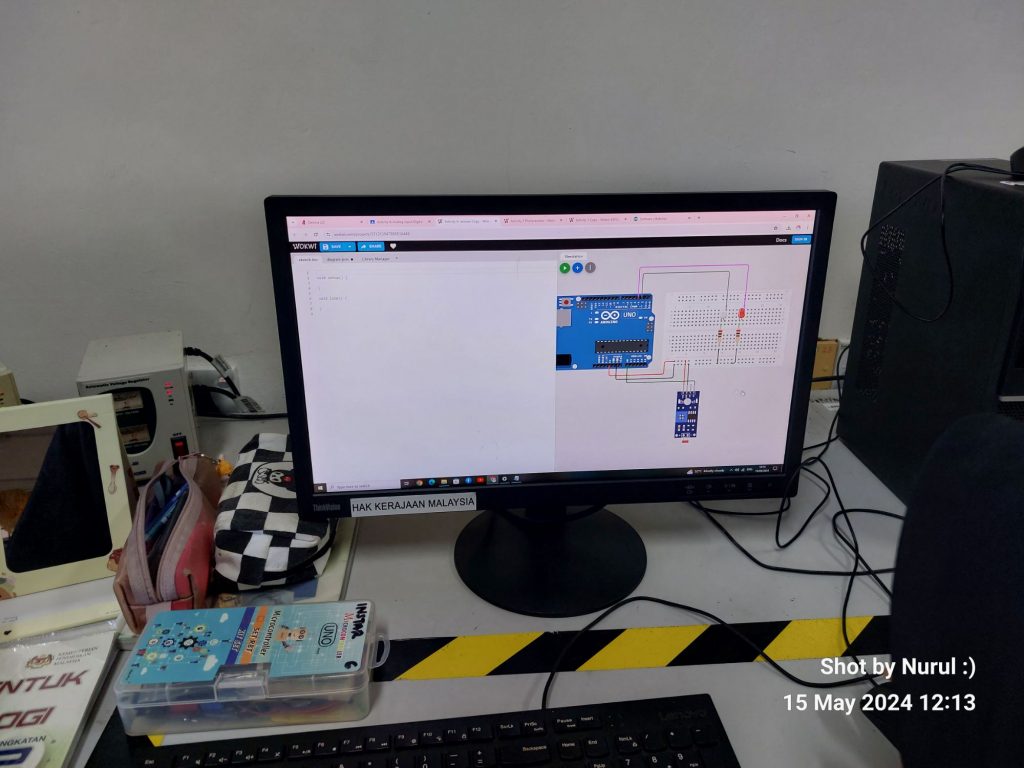

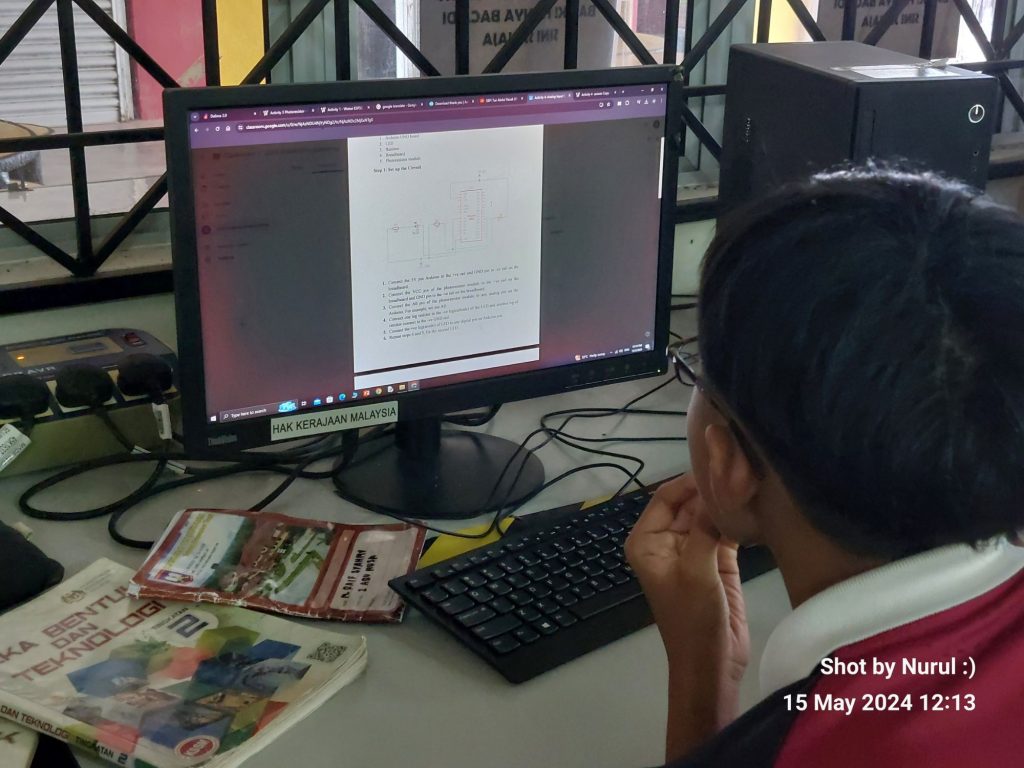


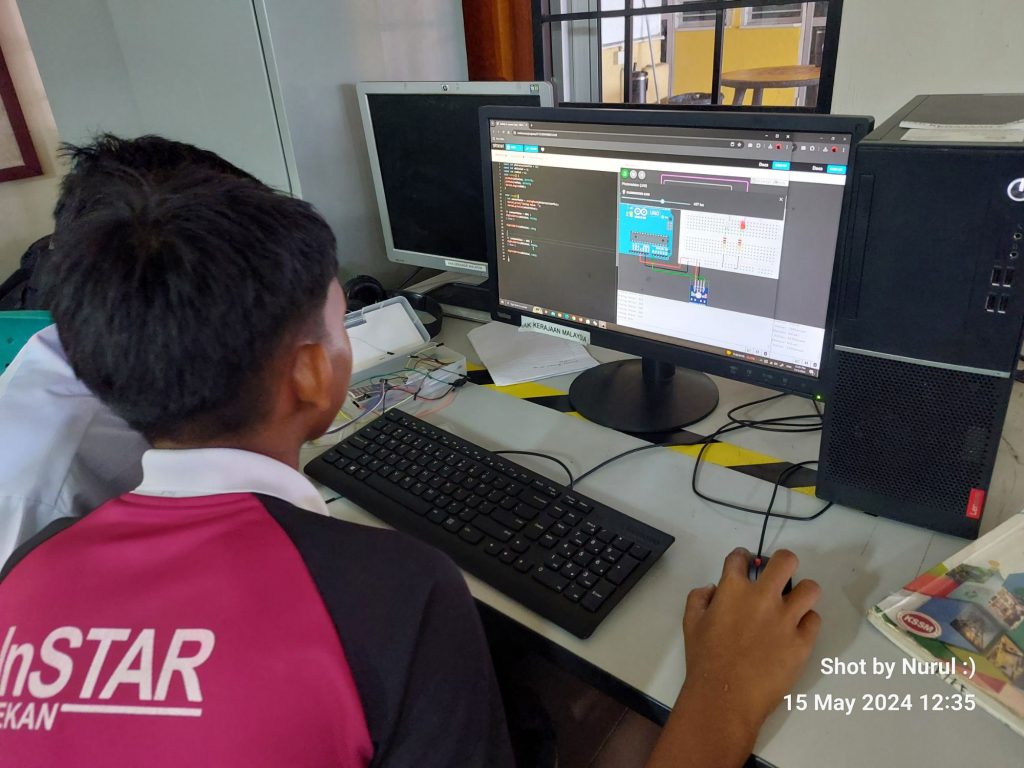

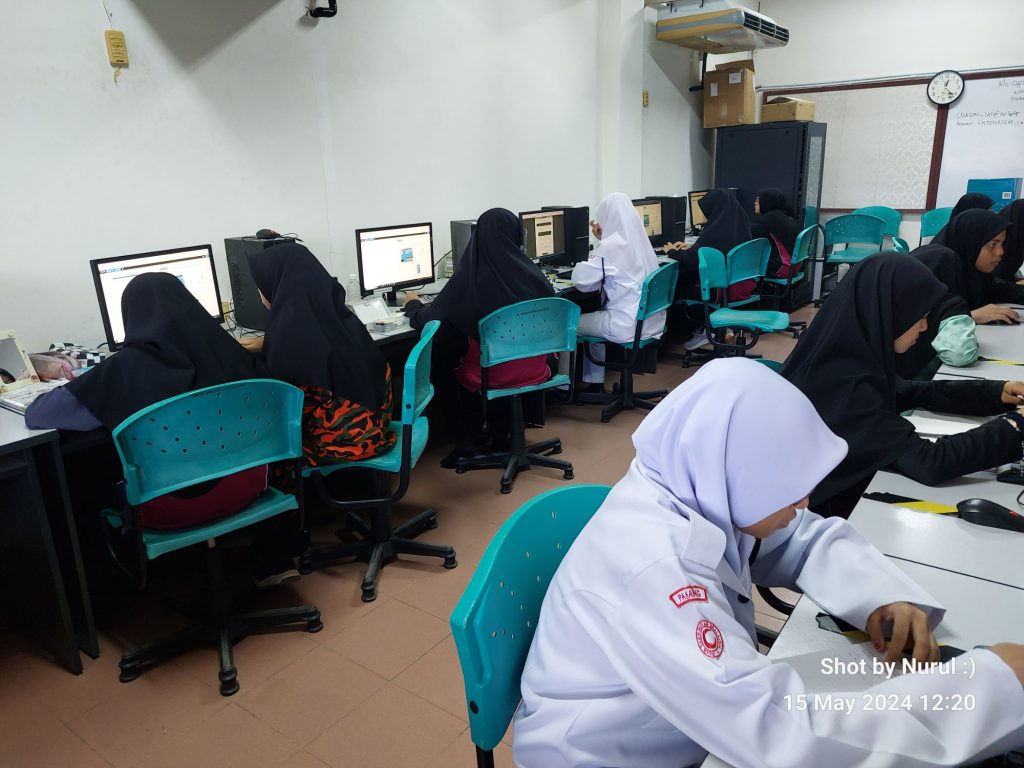
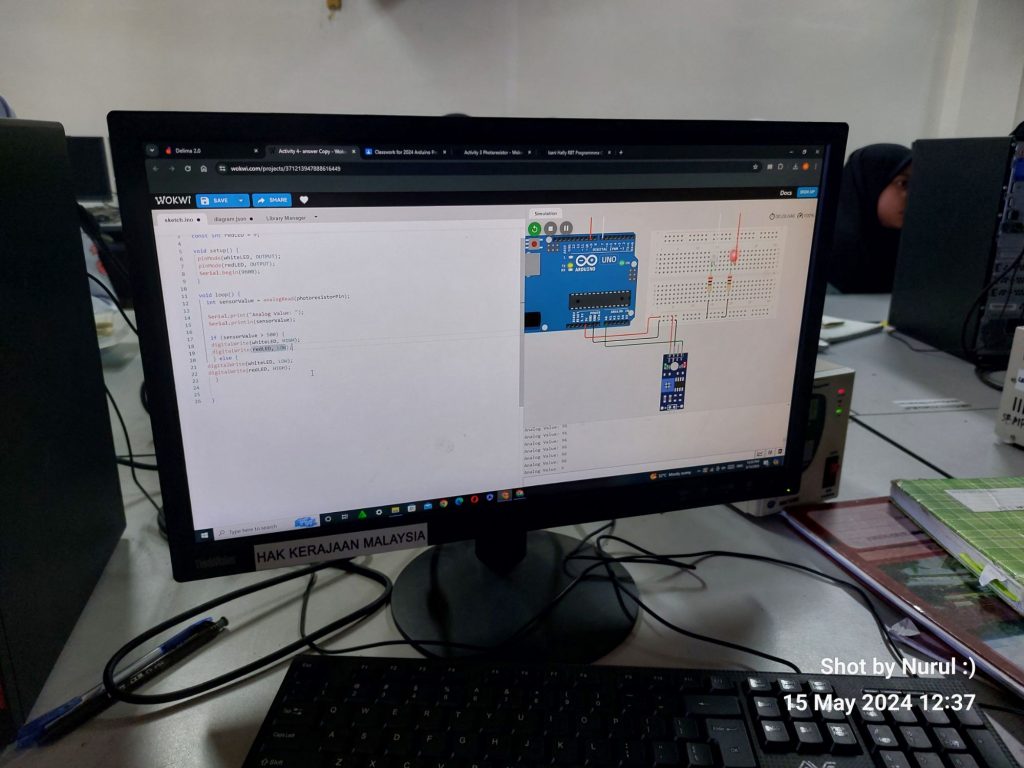




Discussion SDP PSAD
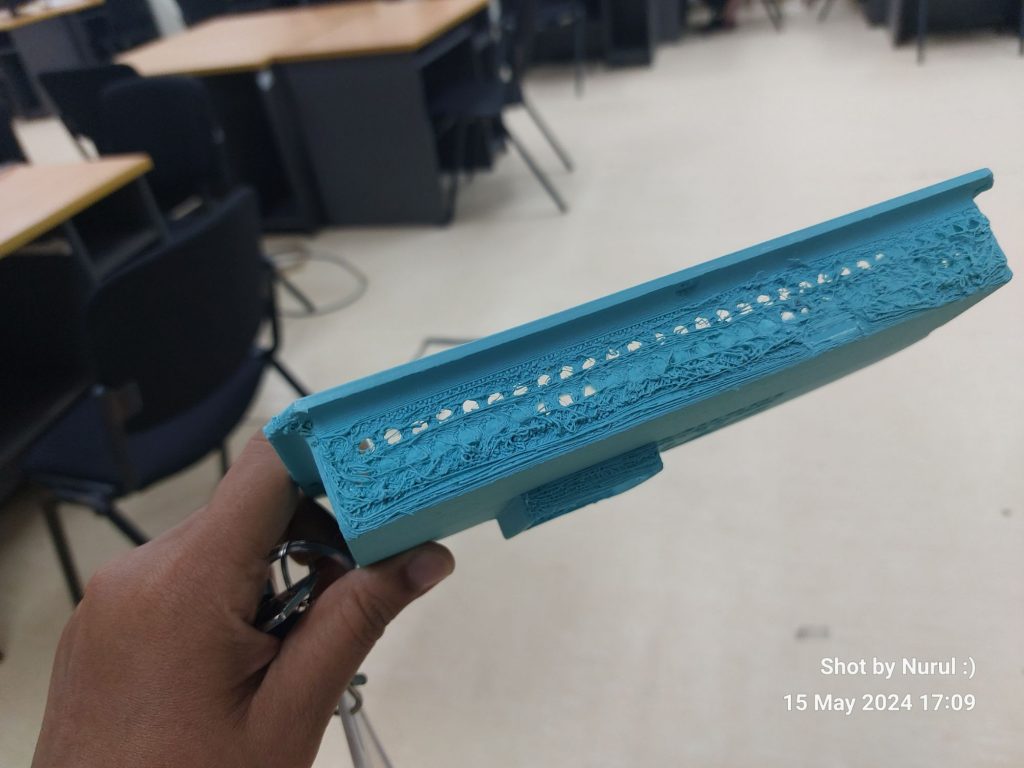
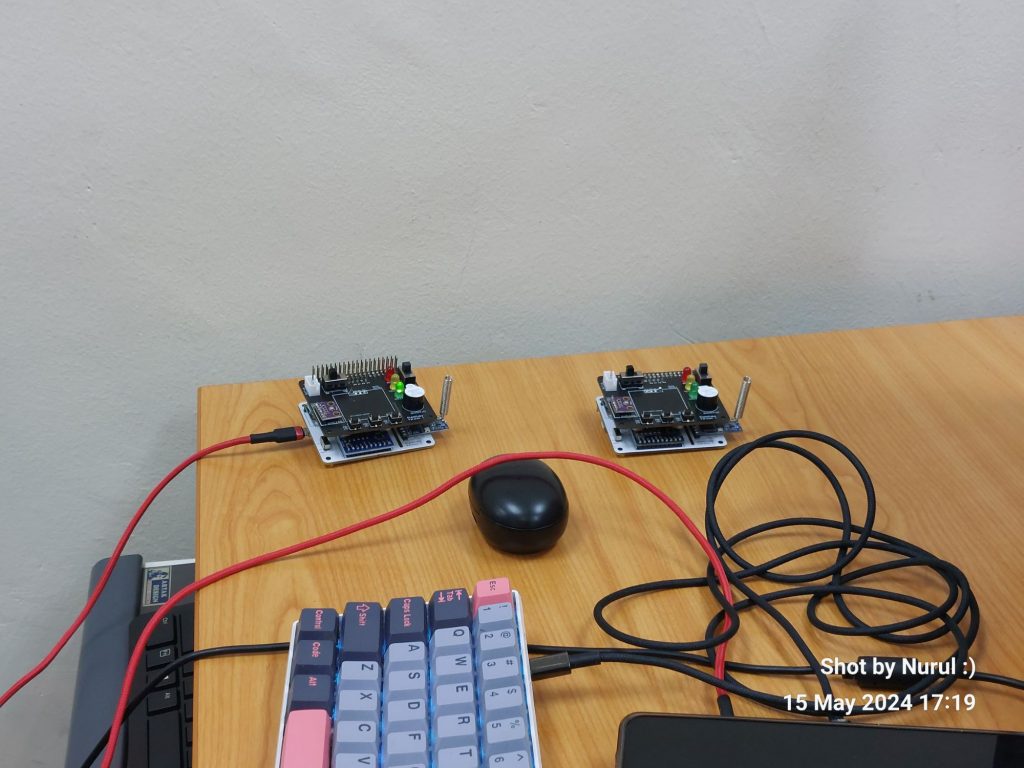
Arduino Programming 2024/1 – SBPI TAR Pekan
UMP STEM Lab Arduino Robotics Synopsis can be found here.
33 students and teachers of SBPI Tun Abdul Razak, Pekan (Batch 1) had participated in this program. Participants went through activities involving Arduino Programming and electronics systems.
Thank you Cikgu Hamidah for coordinating the communication between UMP STEM Lab and the school.

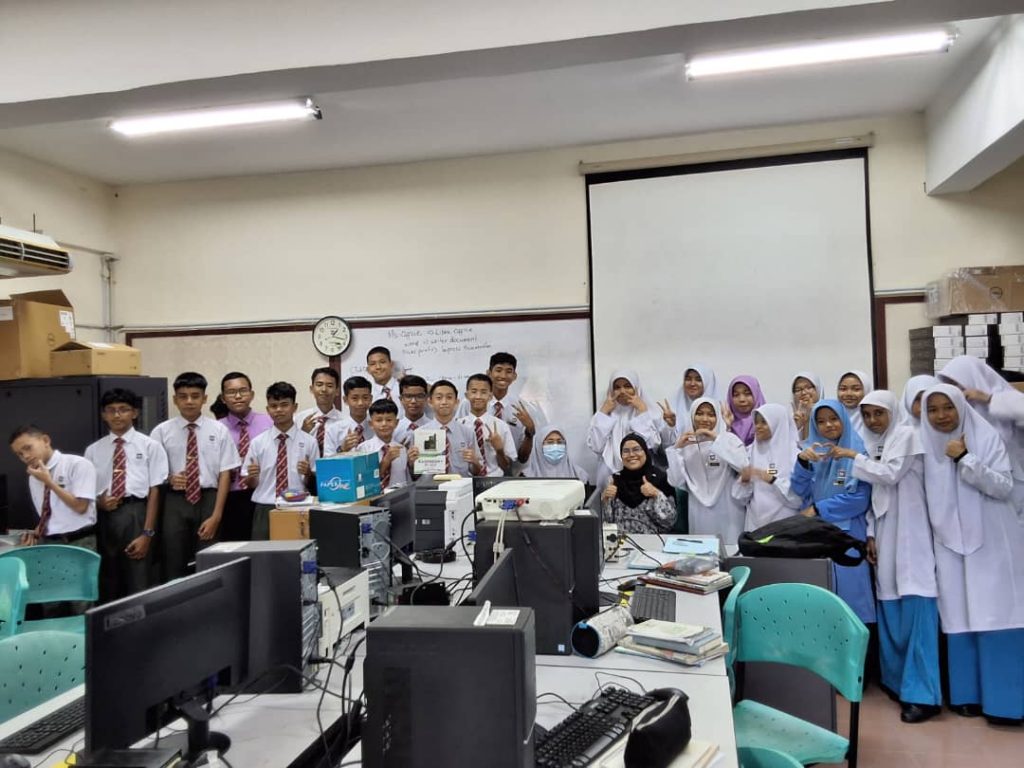

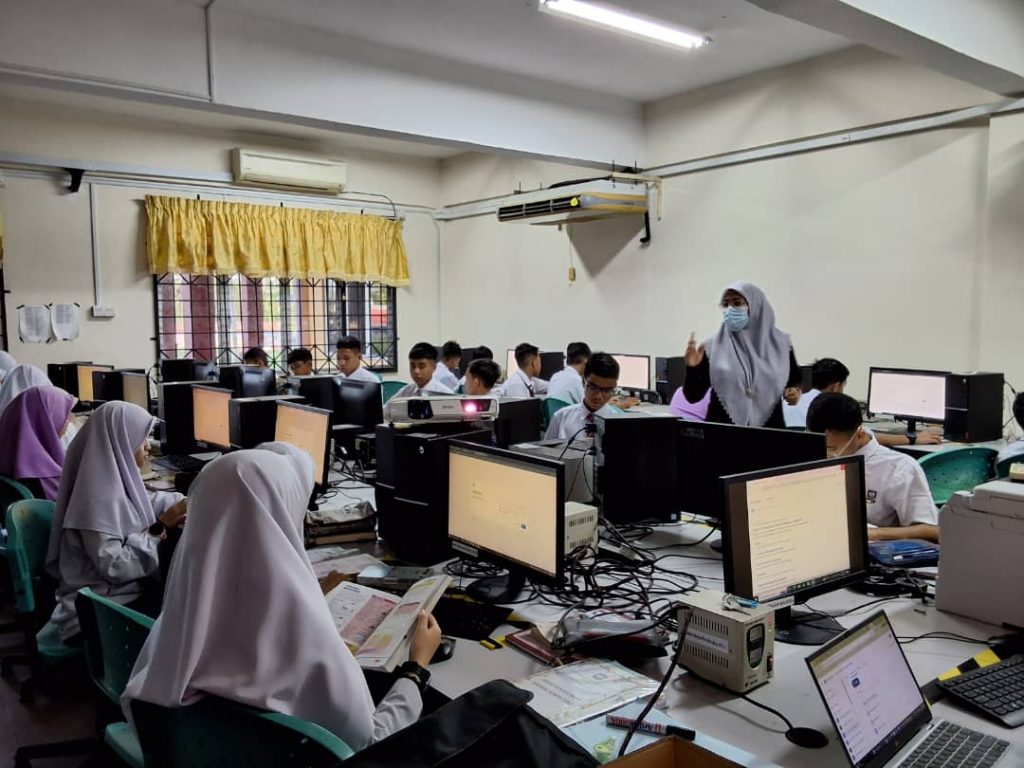
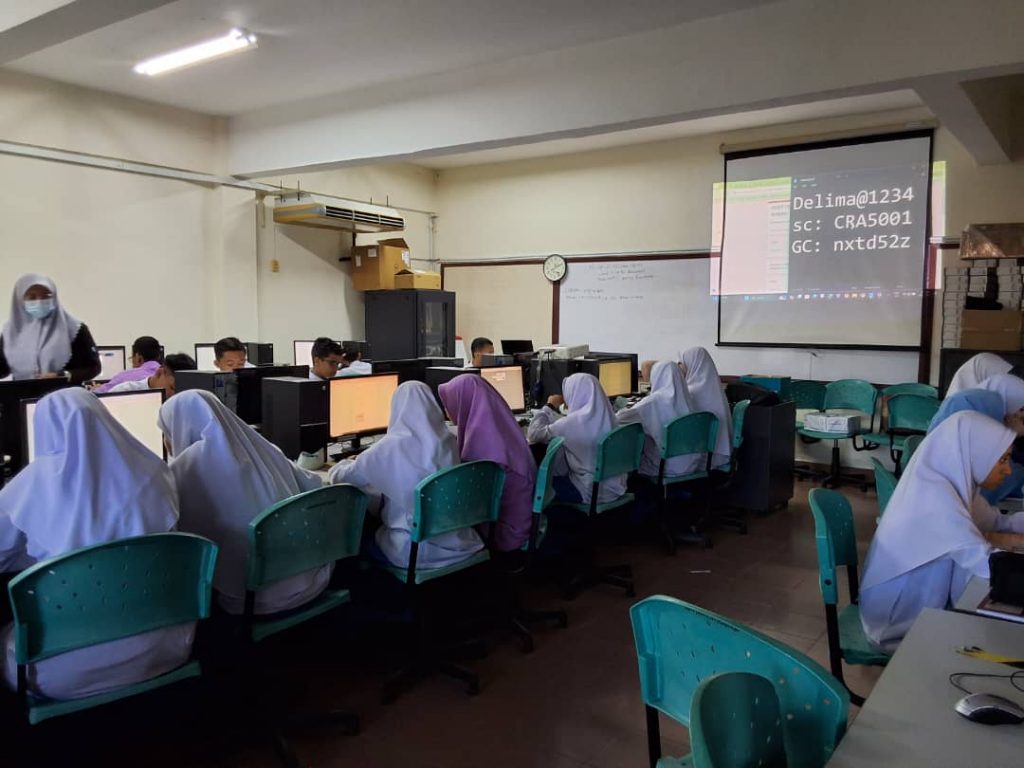
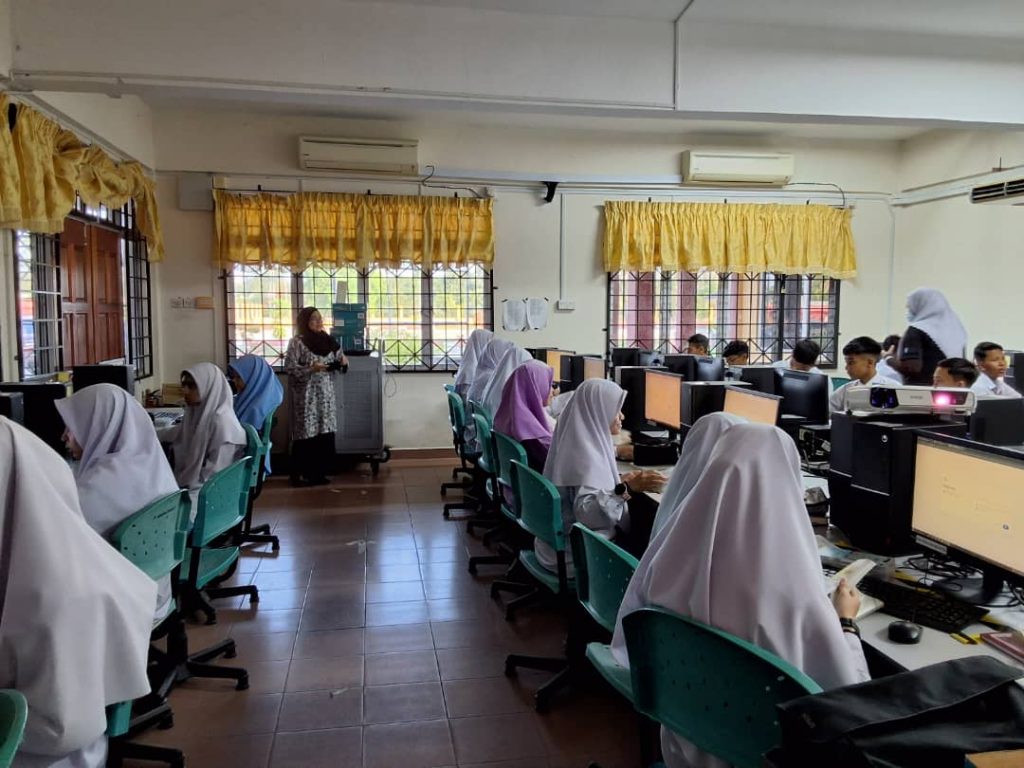
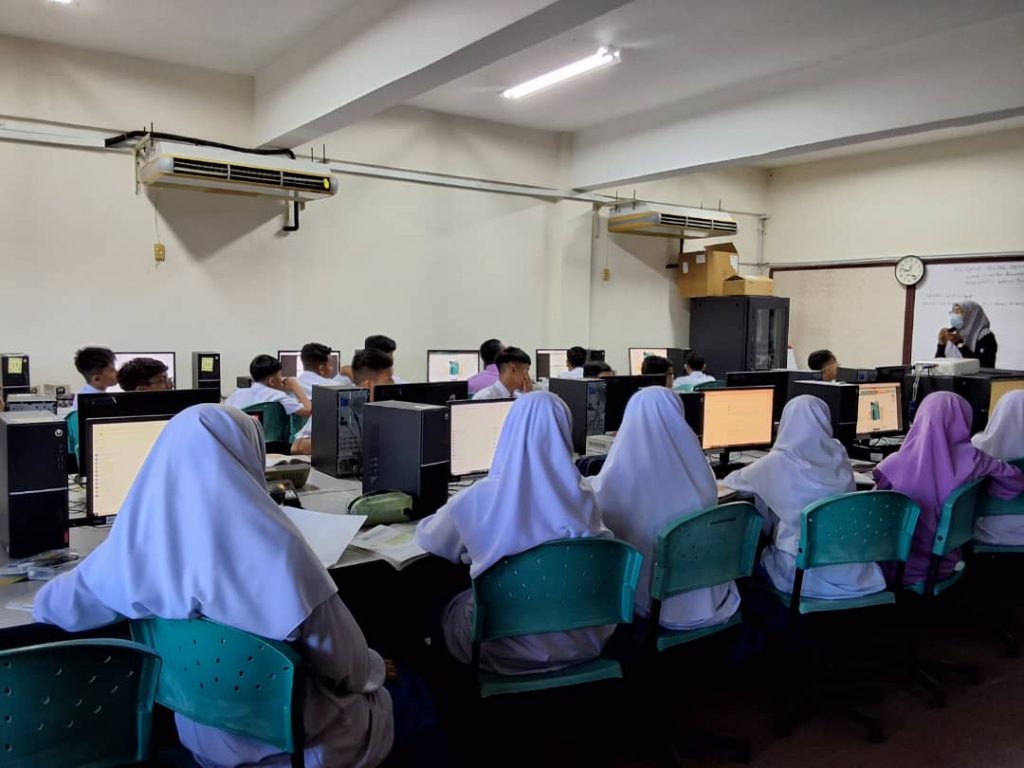

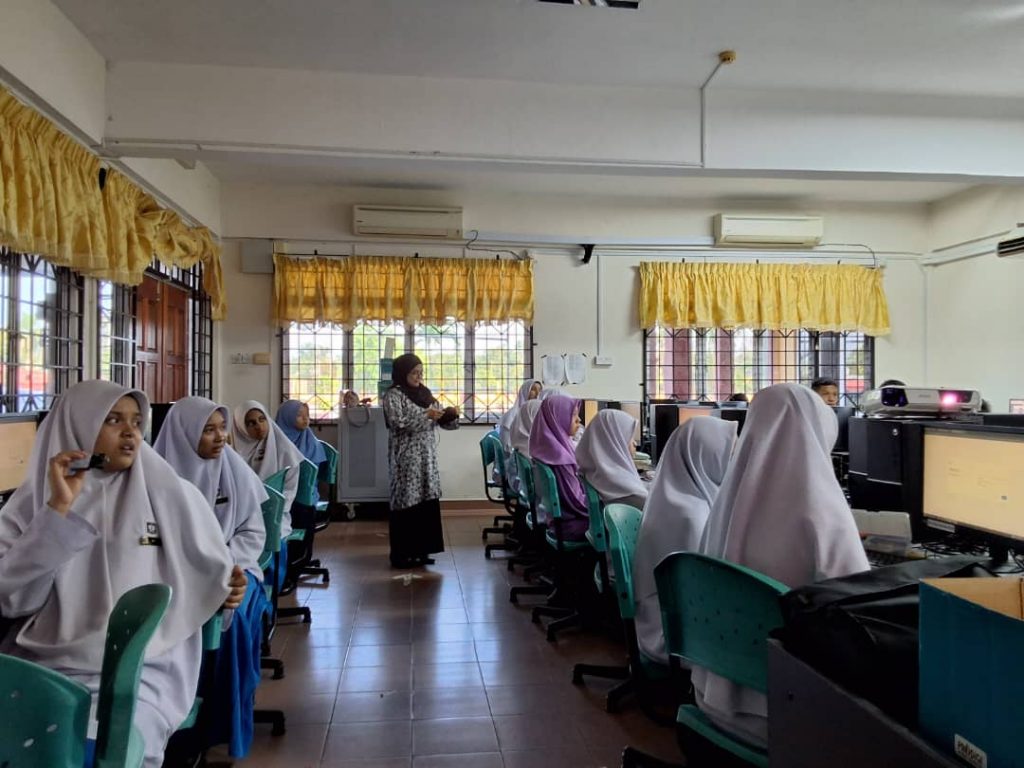
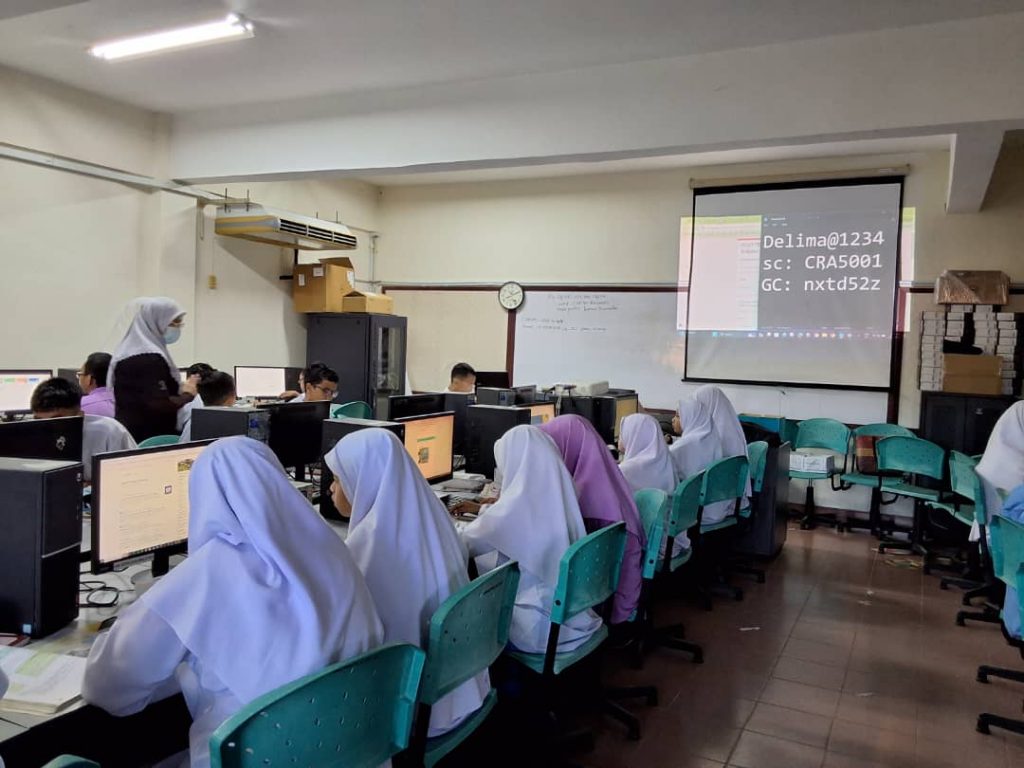
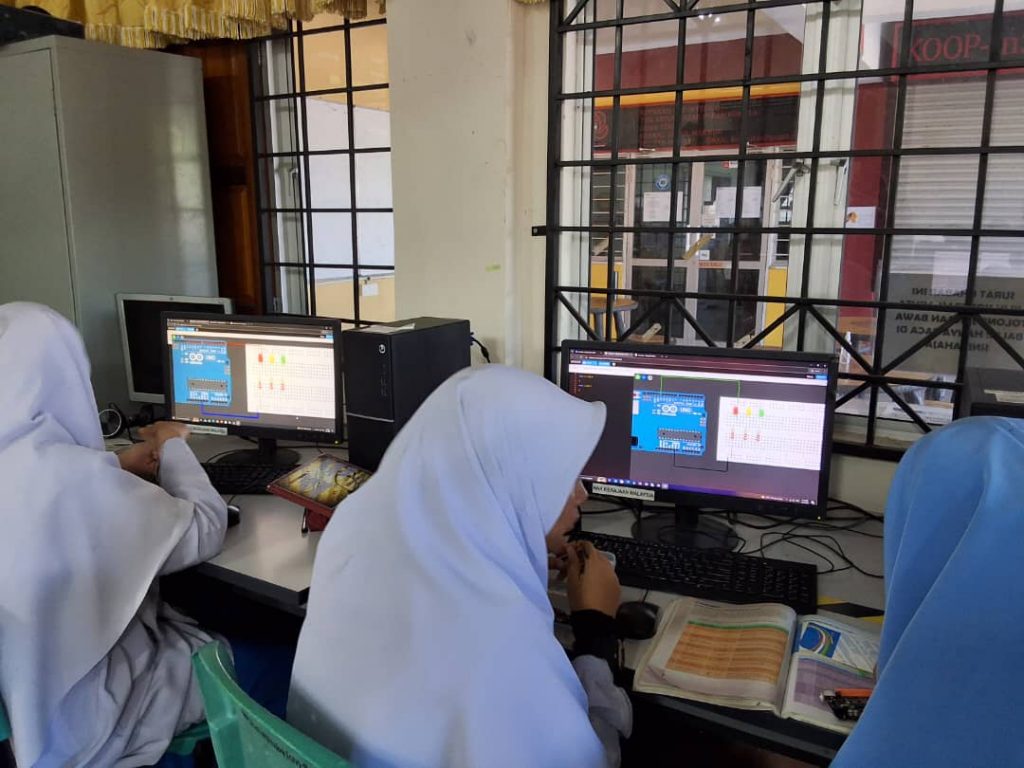

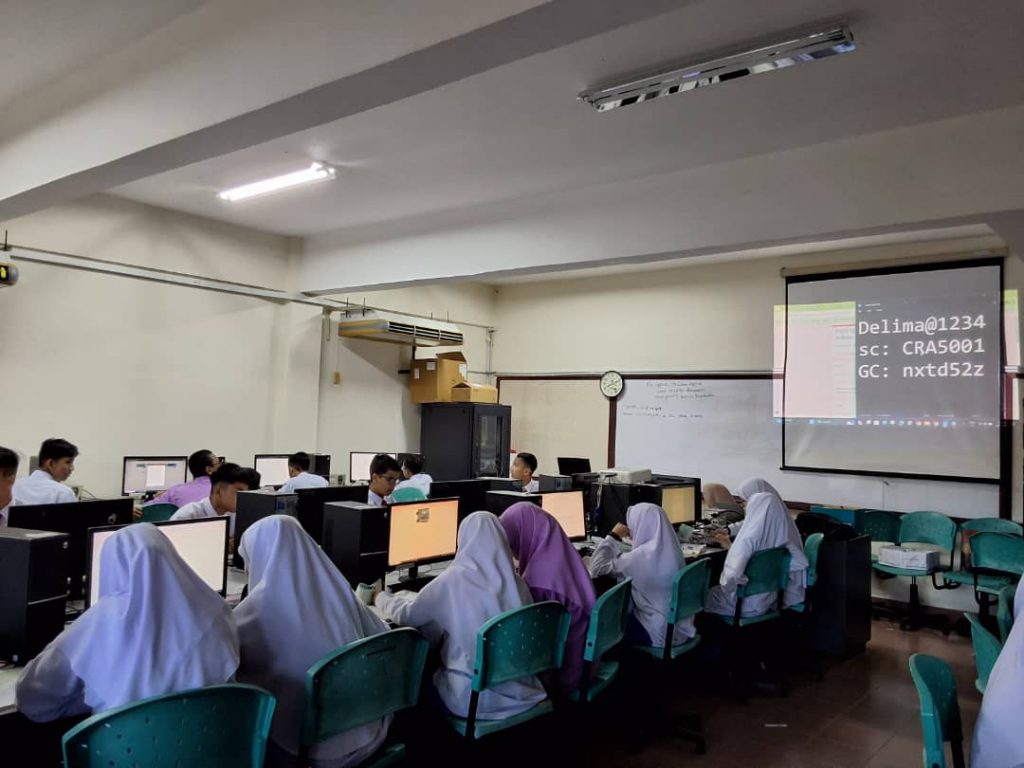



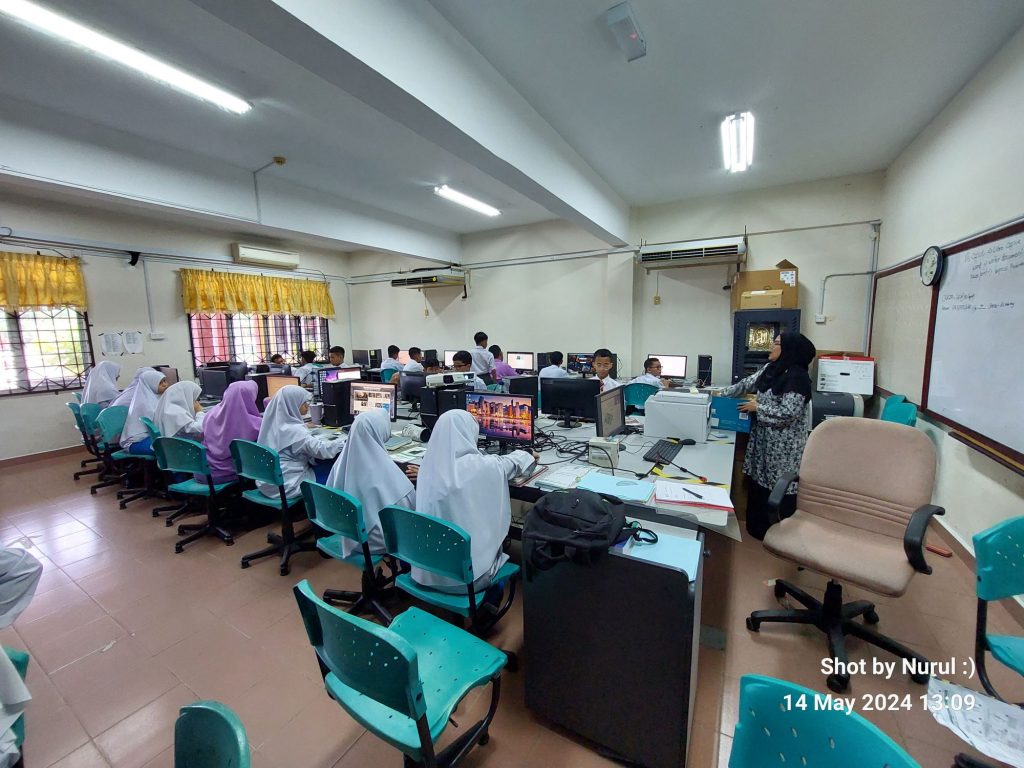


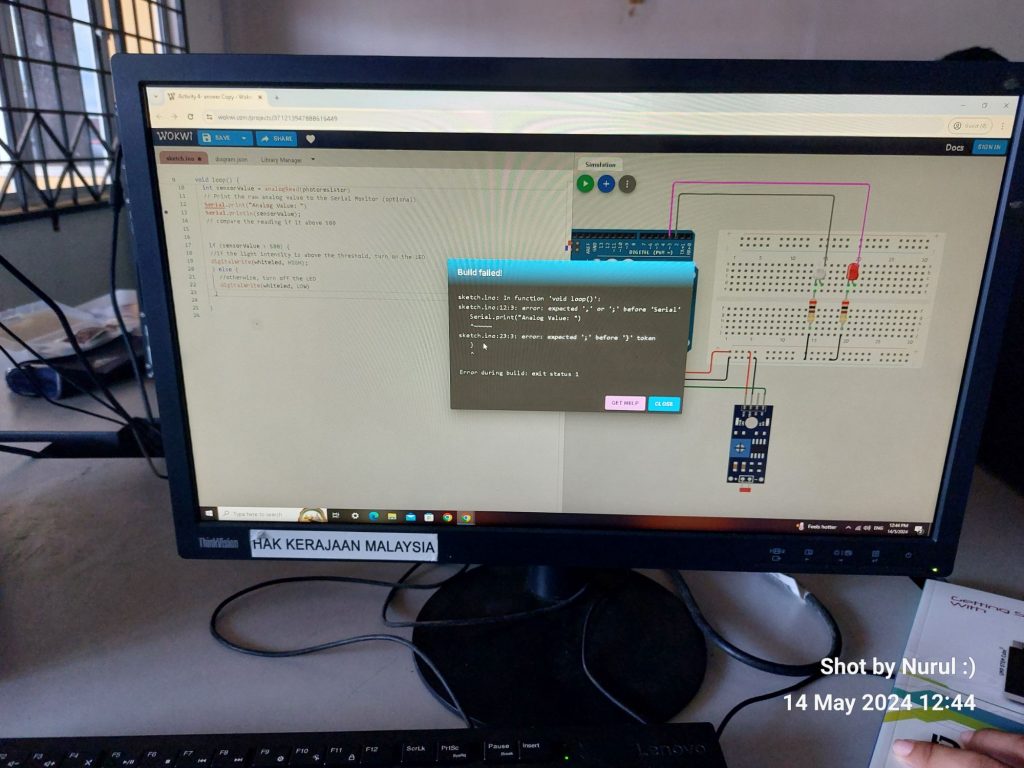

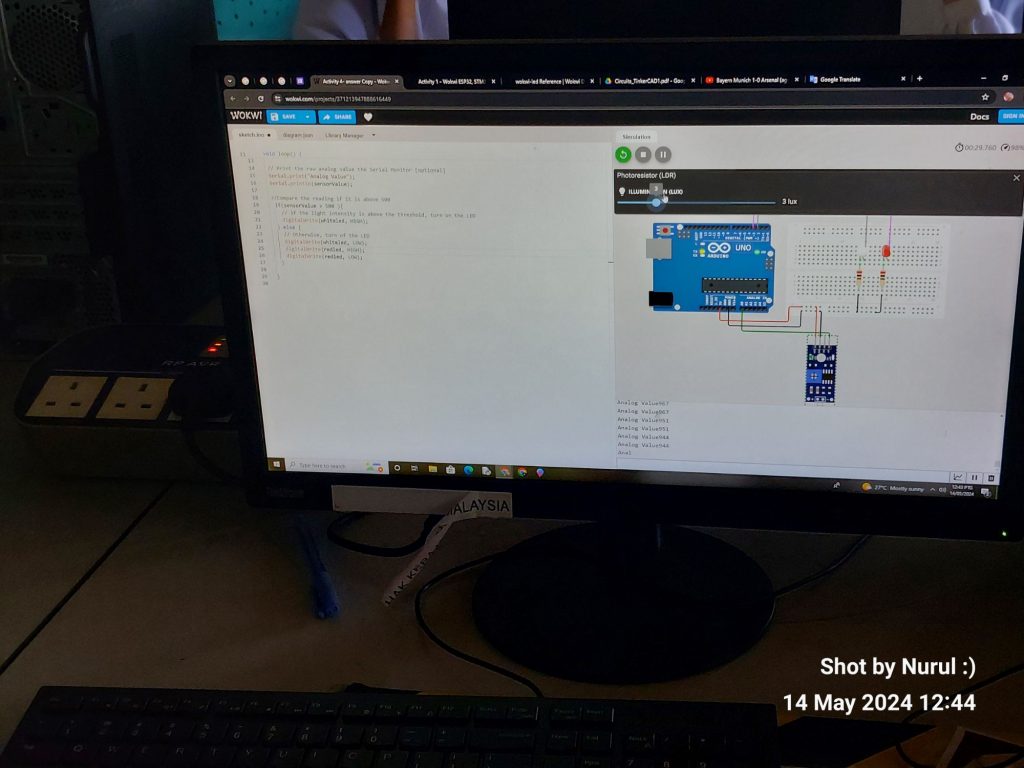

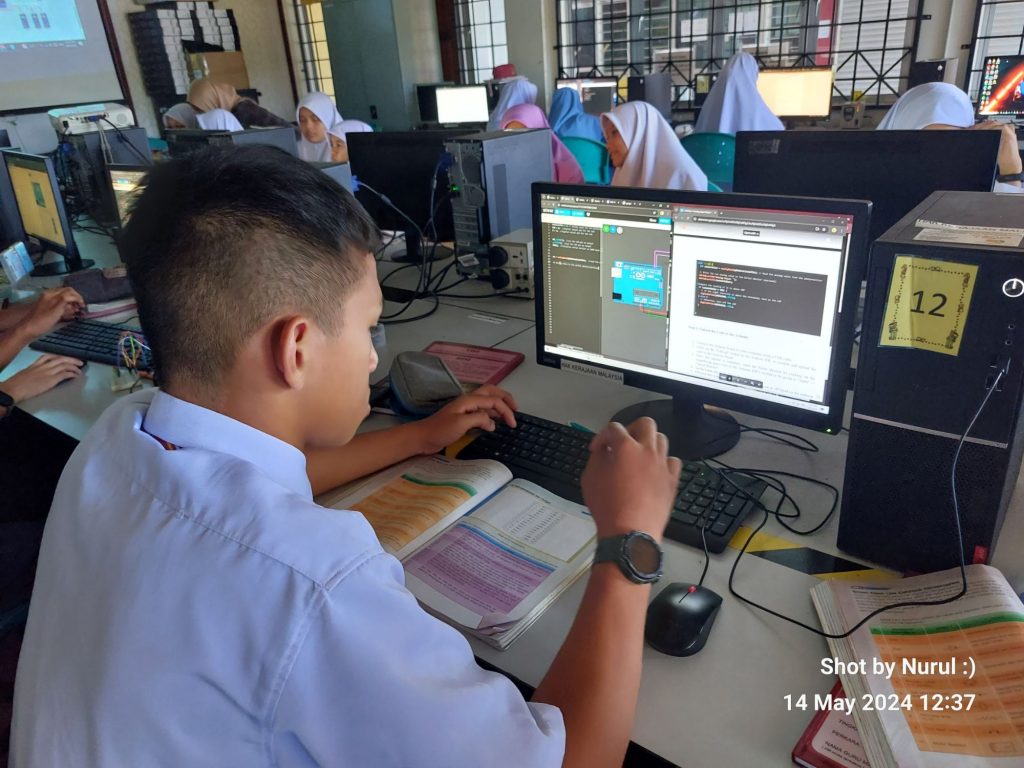
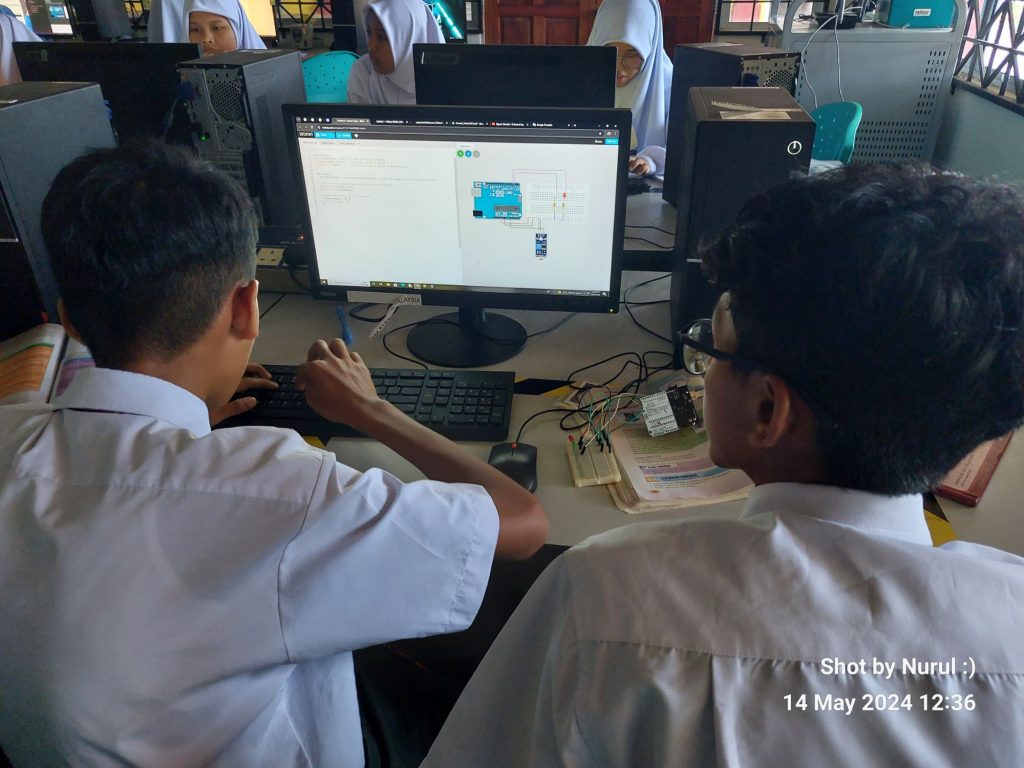



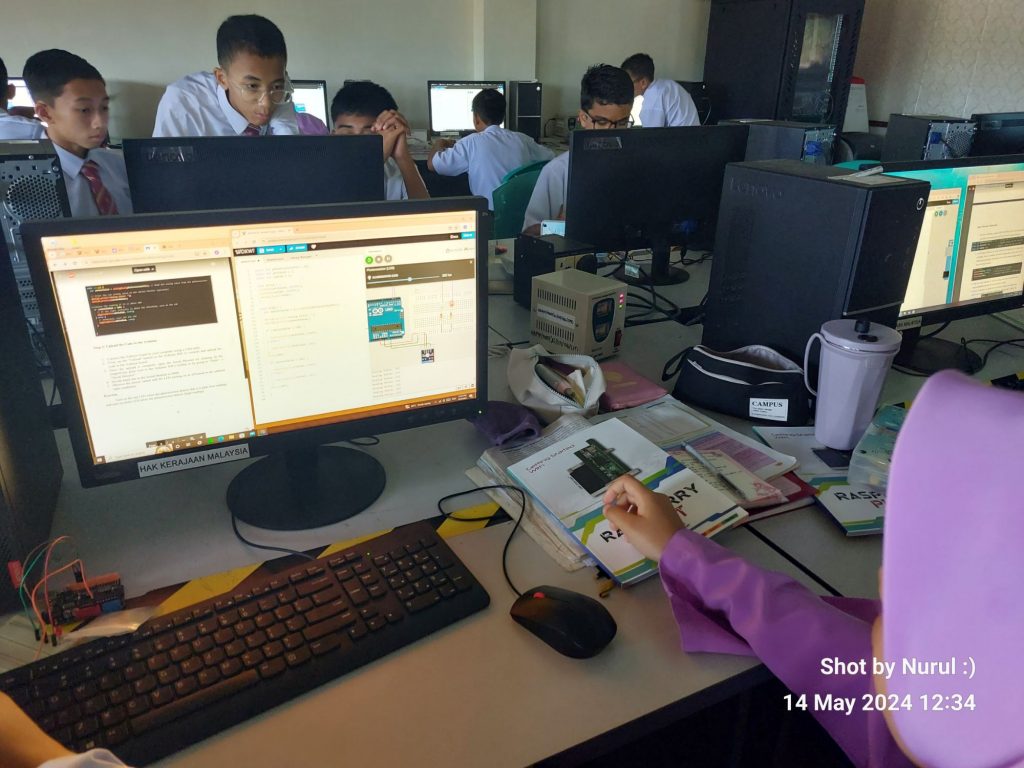
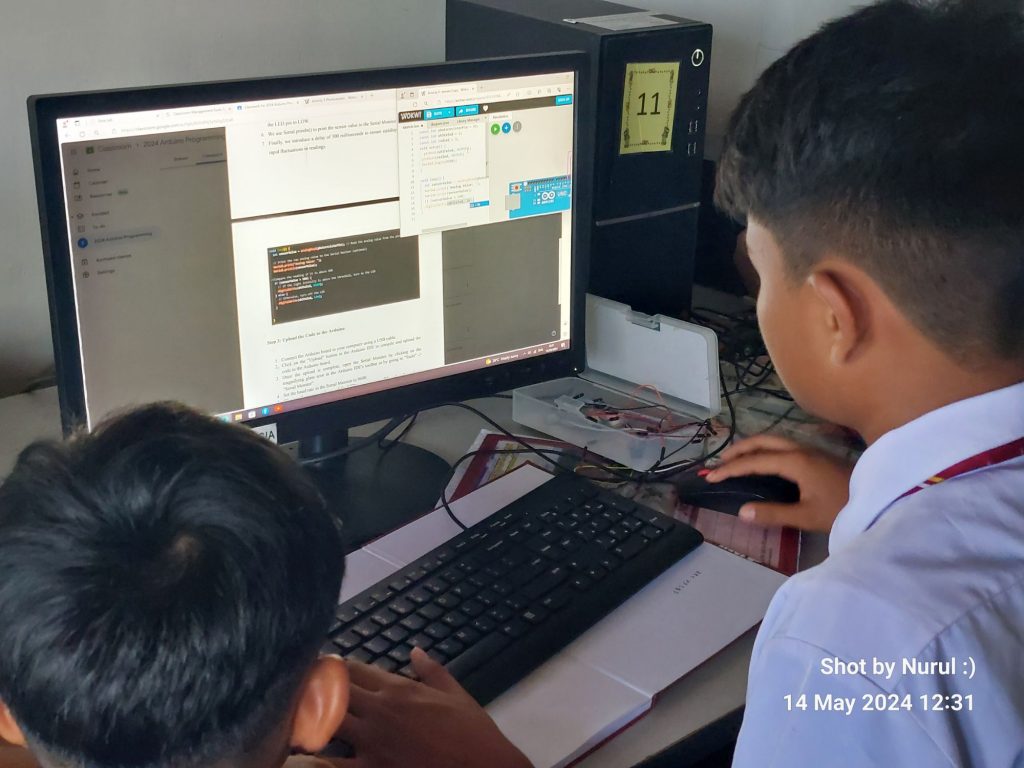
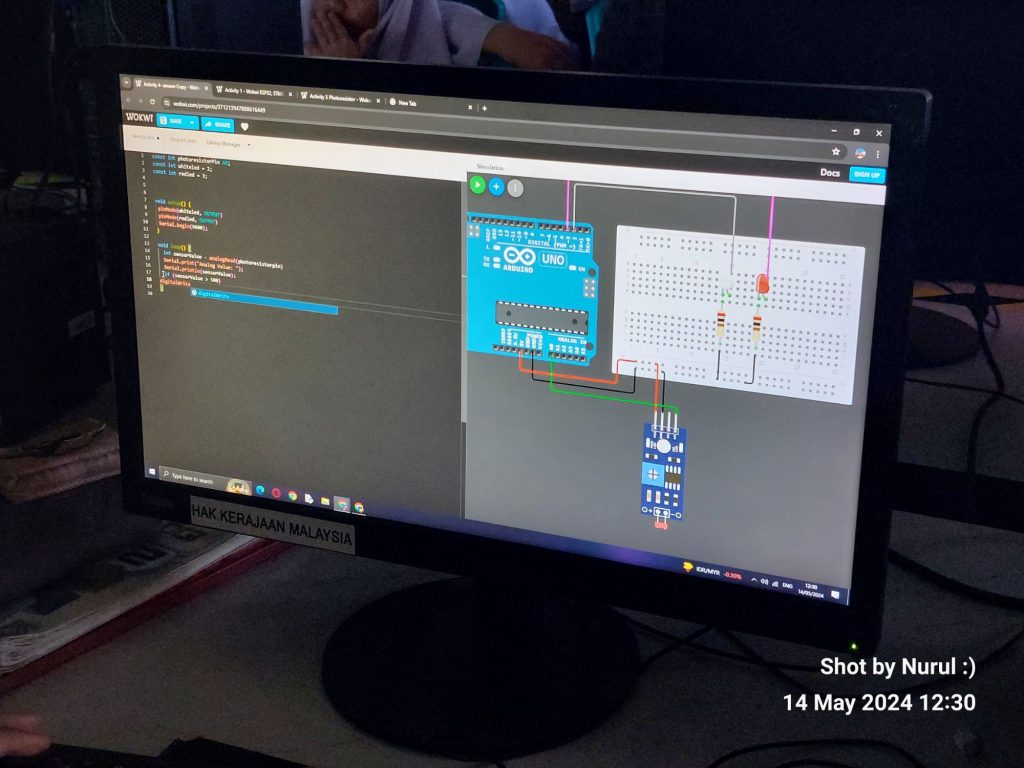


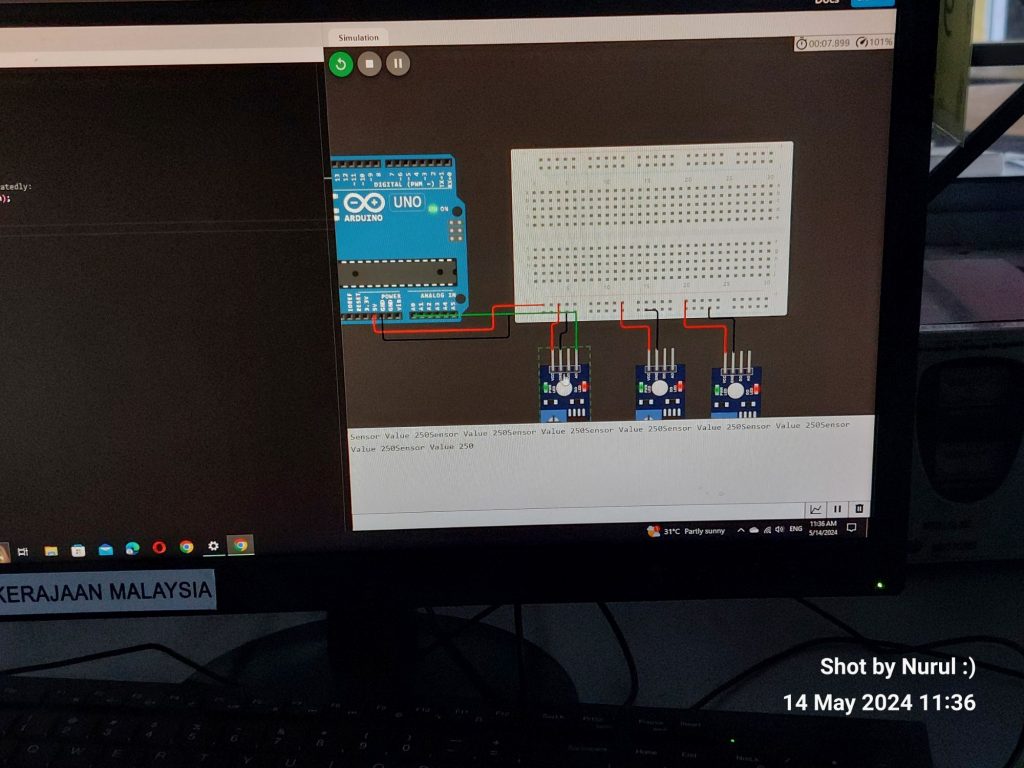
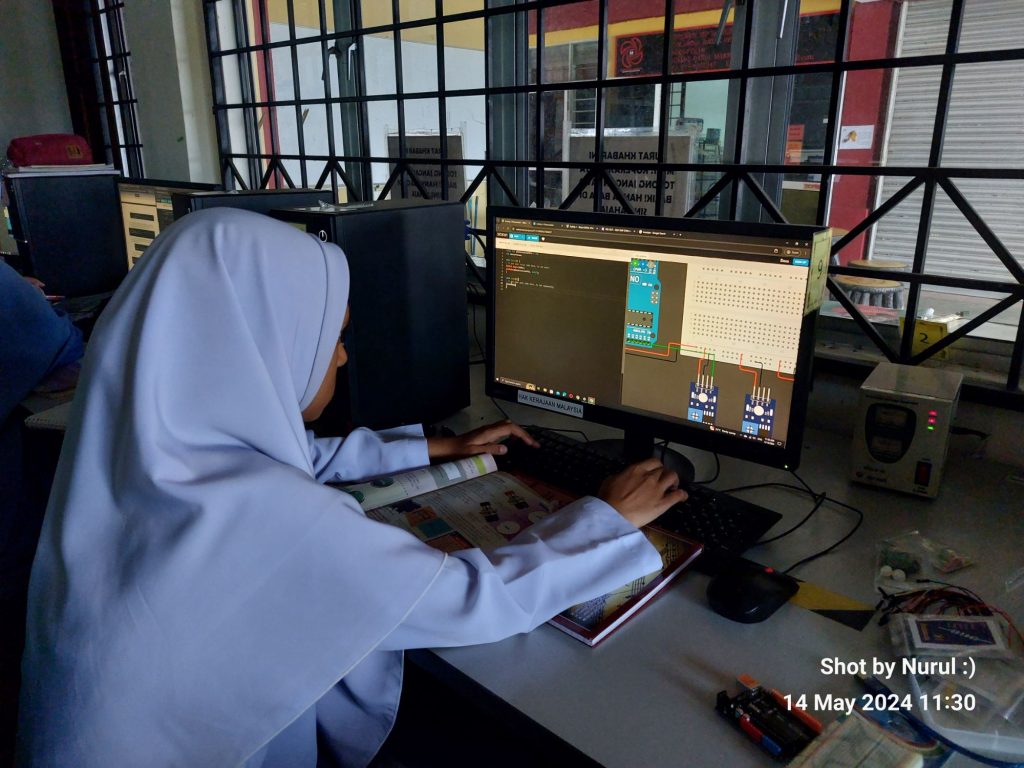
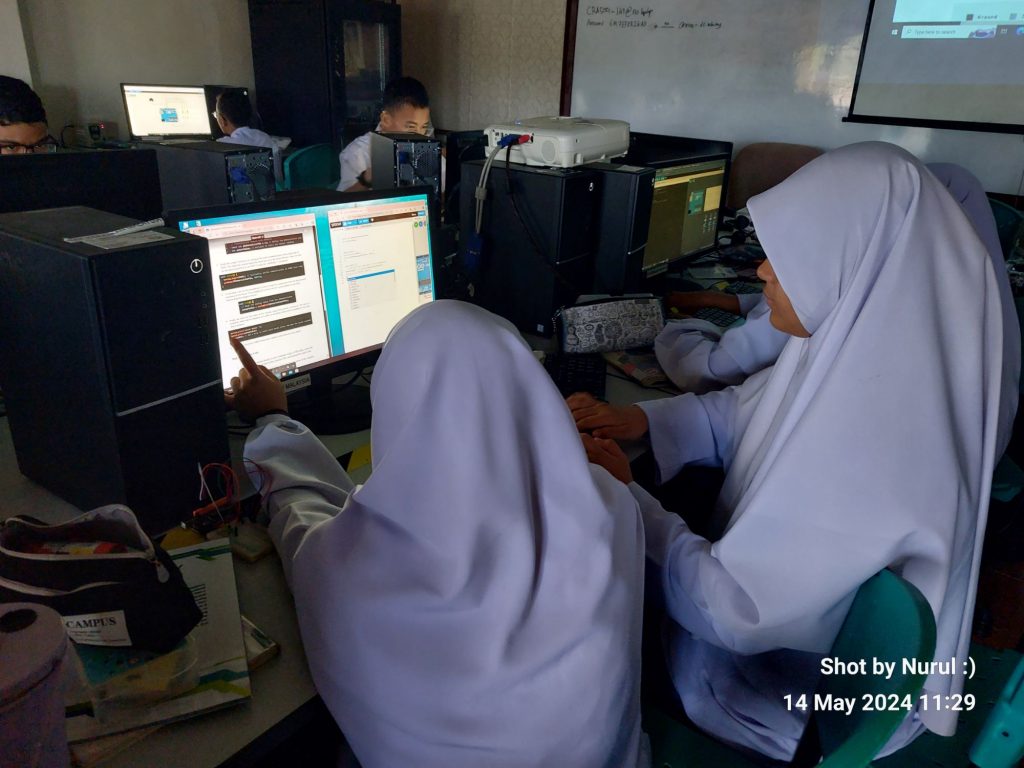
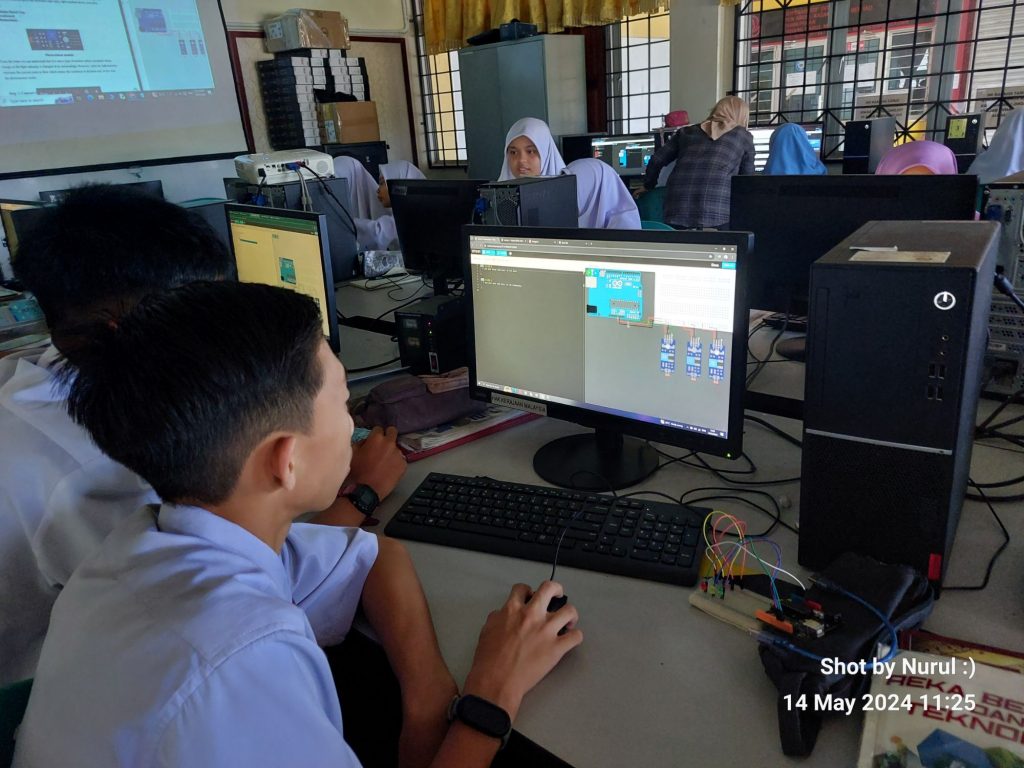


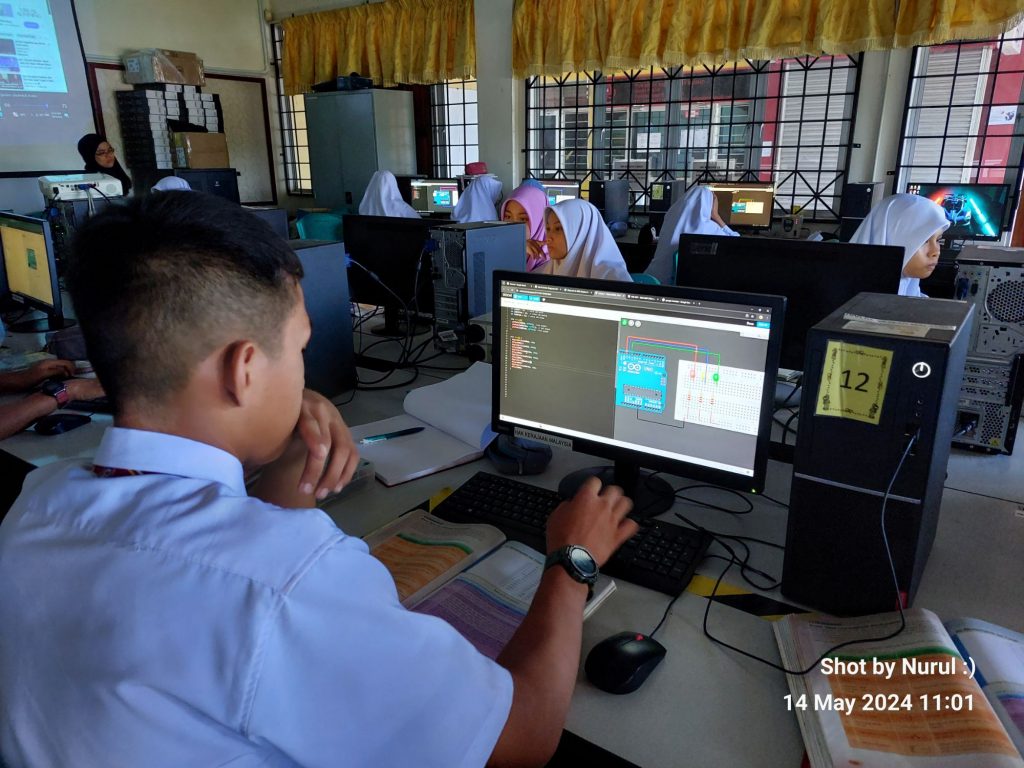

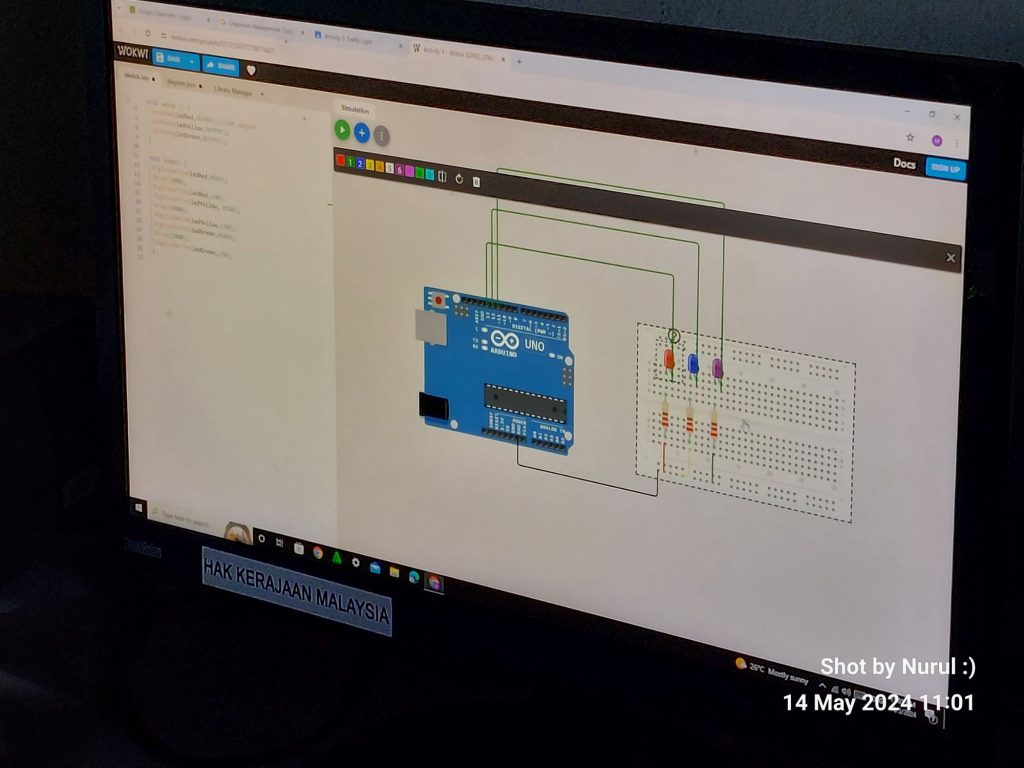









BTE3232 – Com System Laboratory – Assignment Project (20 Marks)
This assignment serves 20% of the overall assessment in BTE3232 Com System Design Laboratory.
Part 1: Tech Talk on Wireless System Communications Technology
First up, you had the opportunity to attend a TechTalk session at UMP STEM Lab on April 29th. If you’ve missed it, watch the recorded session. It’s time to get creative! Choose a format—whether it’s a mind map, infographic, or engaging essay—to summarize the TechTalk session. Make sure to elaborate on the communication technology trends discussed, highlighting key advancements and their implications in the field. Don’t forget to incorporate key points such as the introduction to the TechTalk topic, emerging trends, examples and applications, and future outlook. And remember, creativity is key! Use visuals, diagrams, or relevant statistics to enhance your presentation.
Part 2: Site Visit to Communication Tower
Next, we are planning for a site visit to a Communication Tower. In your post-program report, start with a brief introduction outlining the visit’s purpose and relevance to the course objectives. Then, detail your key observations and insights from the visit, focusing on system design, implementation, and management. Analyze real-world communication system applications observed during the visit and their alignment with theoretical concepts. Reflect on the visit’s impact on your academic and professional development, addressing any challenges faced. Finally, provide recommendations for future visits or improvements to enhance educational value, and conclude by summarizing the report’s main points and emphasizing the visit’s significance. Don’t forget to include any supporting materials, such as photographs or interview transcripts, in the appendices.
Part 3: Campus Radio System Application Identification
For the final part of the assignment, it’s time to look around campus and identify an application of radio systems that you think would be beneficial. You can choose from Frequency Modulation (FM) modulator, Frequency Modulation (FM) demodulator, Amplitude Modulation (AM) modulator, or Amplitude Modulation (AM) demodulator. Once you’ve identified the components required via FTKEE UMPSA component request form. Design and simulate the circuit on a circuit simulator (up to your preference). Analyse the output waveform. Discuss the performance. Construct the radio circuit, measure the output.
Reports need to be submit the components list via the provided link before June 3rd, 2024.